Click on the button to load the content from www.googletagmanager.com.
Load content

- Tailored Vacation Planner
- Cabin Yacht Charter
- Family Sailing Holidays
- Romantic Sailing Vacations For Couples
- Sailing with friends
- Greece all inclusive yacht charter
- Croatia all inclusive yacht charter
- Food & Wine Routes
- Yacht search
- Luxury sailing

Boat vs. Ship vs Yacht: What’s the Difference?
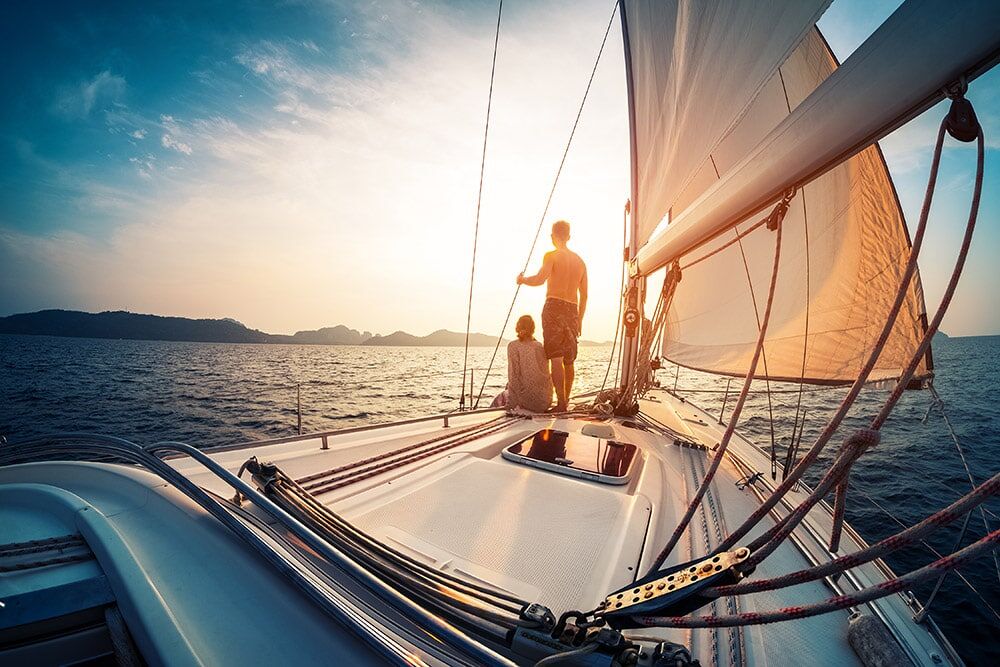
Language is a tricky thing, and picking out the differences between similar terms can be confusing. This is especially true when some of the definitions overlap. This is the case with the case of boat vs. ship vs. yacht . What’s the difference? We know in our gut that there are differences between these three seafaring vessels, but unless you’re a harbor master do you really know what counts as what?
Let’s get into some definitions, and we’re going to start with the easiest to explain: What is a yacht? What is a ship? And what is a boat?
Yacht vs. Ship vs. Boat
What is a yacht.
A yacht, I think everyone would agree, is fancier than a ship or a boat. “Yacht” infers some amount of luxury , and definitely recreation. There’s also something to be said about size. A yacht tends to be anywhere between 35 feet up to 160 feet. And some yachts, known as superyachts, go even beyond that. (Jeff Bezos just built a 417 foot yacht, but that’s really breaking yacht records.)
Because of the size, yachts tend to operate in larger bodies of water–generally the ocean. Yachts are able to handle rougher ocean waves, and they are also equipped with more advanced navigation and guidance instruments than smaller boats. Likewise, a yacht tends to have a full crew to help with the navigation, engineering, repairs, as well as having stewards that serve the yacht’s guests. This can be anywhere from a crew of four or five up to a crew of a few dozen on large yachts.
One interesting thing to note is that outside of the United States, a yacht refers to a sailboat , and a motorized yacht is called a “motor yacht”.
So, is a yacht a boat? Yes, technically a yacht is a boat. But a yacht is a very specific kind of boat.
Want to hop aboard?
Book your dream sailing vacation in top sailing destinations!
- Explore your charter options
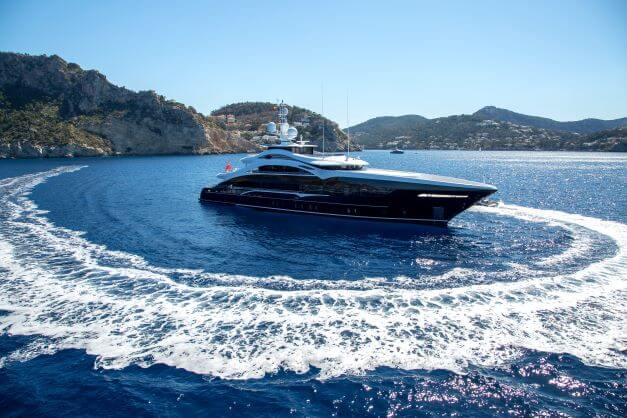
What is a Ship?
The term ship is most commonly associated with a very large boat, and something that is not as fancy as a yacht (one exception is that cruise ships can still be very fancy, but are referred to as ships because of their size and power.)
Ships are generally so large that they would never be found in a lake, with some exceptions for the Great Lakes, and are made for navigating the high seas of the open ocean. An ship can refer to a cruise ship, a naval ship, a tanker, a container ship, and many other commercial vessels.
Ships tend to have advanced navigation and technology, but much more advanced than that of a yacht due to the size, the speed, and the routes that a ship will take. They are meant to be traversing the open ocean for very long periods of time, from one continent to the next, while a yacht may only rarely set across the ocean and most often stays somewhat near land.
A ship will also have a much larger crew than a yacht or a boat. Ships are typically so large that they need not only one trained navigator but a set of navigators, plus an entire engineering team, and includes many more positions.
Finally, a ship is meant to carry things. This may be passengers, yes (in reference to cruise ships and some navy ships) but most ships are for carrying cargo–or even carrying equipment to do work on other ships including repair work or refueling.
What is a Boat?
Well, a boat is harder to define, because a yacht is technically a boat, and a ship is technically a boat. But when people refer to boats, they are almost always referring to something smaller than either a yacht or a ship. Boats may be motorized, like a speed boat, or they may sail, or they may be man-powered, like a rowboat or a kayak. Really, anything up to and including a liferaft, can be called a boat.
(As a side note that will just muddy the waters even further, submarine captains are adamant that their subs are boats. They are not ships.)
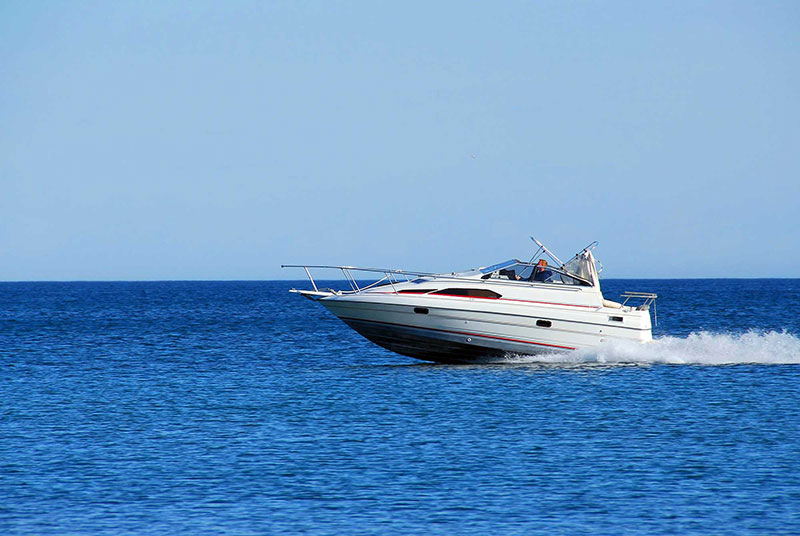
So, Boat vs. Ship Vs. Yacht?
Ultimately it comes down to this: all three of them are boats, but yachts are fancier, larger, and used for recreation, and ships are even larger, used commercially or by the navy, and are meant to cross oceans. The dividing line is sometimes thin, but generally speaking, when it comes to boats vs. ships.vs. yachts you can go by the adage “ I know it when I see it .”
Share article:
Have a question.
We have answers to your questions. So don’t hesitate to get in touch with our team today!
- GET MORE INFO
Feel free to ask us anything. All hands on deck. Let's sail
Thank you for sending us an inquiry, thank you so much for your enquiry.
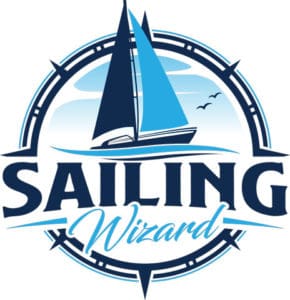
What’s the Difference Between a Boat, Yacht & Ship?
Whether you are a brand new sailor or just wanting to brush up on some terms, it is essential to know what to call a particular watercraft if you’re going to fit in while you’re at the docks or out on the water. There are many nuances and subtle differences between water vessel types, but below are some of the main differences.
In general, yachts are either sailing or motor vessels used for pleasure. Yachts are often luxurious and equipped with an overnight cabin. Boats can be either propelled sail or a motor and come in varying sizes. On the other hand, ships are usually motor-powered and much larger than boats.
Some of the differences between watercraft types can be a little fuzzy, but once you grasp the main differences between them, it becomes relatively easy to tell them apart. If you have no previous knowledge of watercraft, you are likely very confused about what defines a yacht, boat, and ship, so I’ll try to clarify any confusion you might have in the next few sections.
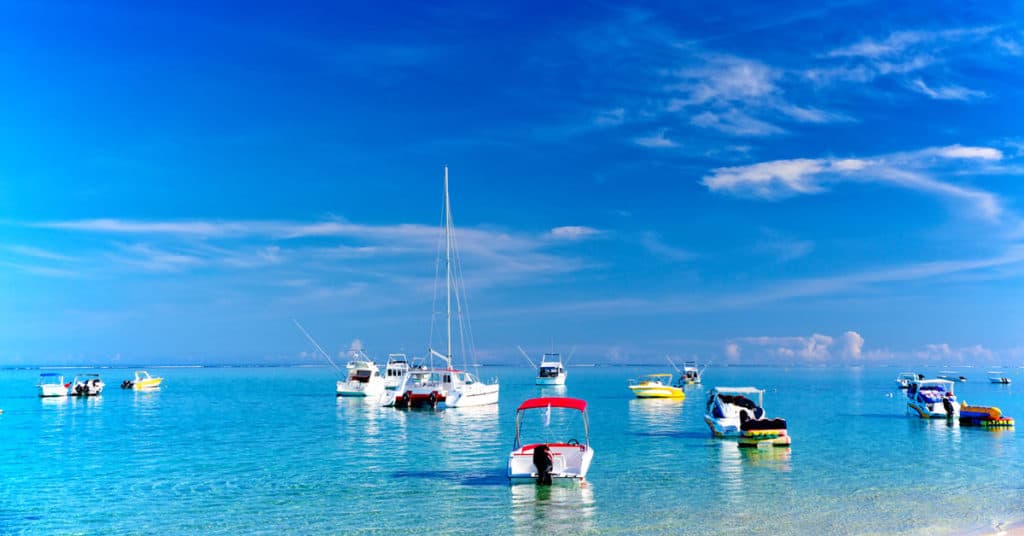
Similarities and Differences Between Boats, Yachts, and Ships
The many bodies of water all over the world are home to an extensive collection of different watercraft. There are so many shapes and sizes that they come in that it is nearly impossible to fit every single one into a specific classification.
However, in the following table, I did my best to loosely define ships, yachts, and boats so that it is easy to see the differences between the types of watercraft.
As I mentioned earlier, it is impossible to fit EVERY SINGLE water vessel into a particular category, so there are tons of exceptions out there. In addition to the exceptions, different organizations, laws, and people classify types of boats slightly differently.
There is no universally accepted definition for ships, boats, and yachts, but instead many different sets of rules and regulations. In this article, I have tried my best to use the most commonly accepted definitions for each watercraft type.
Now that we’ve gone over some of the main differences and similarities between boats, ships, and yachts, let’s take a look at each type of vessel individually and look at their most prominent characteristics and attributes.
What Exactly is a Boat?
Boats come in a vast array of sizes and shapes. To many people, the term “boat” simply refers to nearly any watercraft, but there are actually a few restrictions and defining characteristics that all boats have. So let’s just get right into it and take a quick look at what exactly qualifies a vessel as a boat.
Overall Size of Boats
As I said before, there is a massive catalog of different types of boats, and they come in a variety of sizes. There are huge boats that hold lots of cargo or people, and then there are smaller ones that barely can stay afloat with a single person on board.
Typically, boats are defined as watercraft that are less than 197 feet long. However, most boats you are likely to encounter on the water are usually around 30 feet long.
General Price Range of Boats
Again, it is hard to accurately give a price range for all boats because they come in so many different sizes, styles, and types, but most modern boats seem to fall in the $1,500 to $100,000 range.
Small Jon boats can cost even less than $1,500, while large sailboats and houseboats can cost well above $100,000.
Most Common Uses of Boats
Boats are used all over the world for a variety of different reasons and to do many tasks. Many types of boats serve a wide range of uses, but most are primarily used as a residence, for pleasure, or commercially.
Some of the most popular types of boats, such as sailboats, bowriders, and dinghies, are commonly used for enjoyment, fishing, racing, or other pleasurable activities. There are also many types of houseboats used as residences and commercial boats used for chartering or moving goods or people.
Propulsion Method of Boats
Due to the wide variety of boats, you are likely to find boats propelled by almost every propulsion method imaginable. Some of the more popular propulsion methods for boats to use are man-power, wind power, and motor power.
Boats on the smaller end often use the power of the people on board to row or paddle, while larger boats rely on sails or powerful motors attached to the stern. Many boats use more than one propulsion method, either together or with one of them as a backup.
What Exactly is a Yacht?
Yachts have many of the same attributes as boats, but their quality, size, and luxury really set them apart. When someone says “yacht,” many people imagine watercraft that are SUPER LARGE, and while there are lots of massive yachts, many smaller boats also qualify as yachts, which might surprise you.
Overall Size of Yachts
There are many different sized yachts, and the rules regarding how big they have to be are not very strict. In general, luxury watercraft greater than 33 feet in length are considered yachts. However, boats smaller than 33 feet are sometimes called yachts if they are exceptionally luxurious and elegant.
There is no upper limit to how large a yacht can be. Yachts longer than 100 feet are often referred to as mega yachts, and ones over 150 feet long called are super yachts.
General Price Range of Yachts
Because the very definition of a yacht requires it to be very luxurious, they often come with quite a price tag as a result. There is quite a range of different price points for yachts, ranging from $250,000 to $50,000,000 and beyond.
Most Common Uses of Yachts
Yachts, because they are so expensive to maintain and purchase, are primarily used for pleasure purposes. Day trips out on the water are typical for yachts, although they often have overnight cabins, so longer excursions are popular.
Chartered yachts are also very popular, which bridges the gap between commercial and pleasure. Although, when you are on a chartered yacht, it is usually for the sole purpose of having a great time and enjoying yourself.
Propulsion Method of Yachts
Because yachts are considered very luxurious and often so large, they are usually solely propelling using motor power. Even if a yacht is on the smaller end of the spectrum, they often only use a motor as a means of driving the craft through the water.
However, many large sailing yachts out there use sails and the wind to propel the vessel. So while the large majority of yachts use motors, keep in mind that some large and luxurious sailboats can be considered yachts.
What Exactly is a Ship?
Throughout history, large ships have been a helpful tool for many civilizations and have allowed them to transport goods and explore places beyond their homes. In modern times, ships are quite common and are used for a variety of different reasons.
Overall Size of Ships
One of the primary characteristics of ships that set them apart from boats is their size. Ships, especially in modern times, are often MASSIVE and are restricted to navigating only extensive waterways.
Vessels greater than or equal to 197 feet long are often considered ships. However, most ships today are huge and often fall in the 1,000-foot range or larger.
General Price Range of Ships
Most individuals will never own a ship due to their extreme maintenance and the cost of purchasing one. While many smaller ships are far less expensive, most modern ships cost anywhere between $50 and $500 million.
Large and luxurious cruise ships can even cost upwards of $1 billion to construct, and that’s not even taking into account staff, maintenance, and other costs.
Most Common Uses of Ships
Ships perform many different duties throughout the world, but usually, they are used to transport passengers or goods over long distances. In addition, they are also often used by military, scientists, fishers, and a plethora of other professions and people. They are also often used for pleasure purposes, in the form of passenger cruise ships.
Overall, ships encompass a large selection of vessels that perform many different duties.
Propulsion Method of Ships
Due to their large size, most modern ships are propelled using motors. However, even though ships are equipped with massive motors, they are still pretty slow and often move at around 20 knots per hour, although some move much quicker.
While most, if not all, ships today use motors to propel themselves through the water, this was not always the case. Before motors were around, many civilizations used ships for military, exploration, transportation, shipping, and many other uses. During these times, ships were powered primarily by man and wind power. Even today, you can occasionally find a sail-powered ship, though they are quite rare.
James Gerard
Hi, I'm James! I started sailing at a very early age here in the UK, and have enjoyed so many opportunities to sail all over the world. I created this website to share the many sailing tips I've leaned over the years, so that you can also discover the joy of sailing with safety and confidence.
Recent Posts
How to Predict Wind Direction & Speed from a Surface Pressure Chart
Learning how to read a surface pressure chart will allow you to predict the wind speed and direction based on the weather chart. This will help you in planning your next sailing trip.
What Does a Black & Yellow Buoy Mean? (Cardinal Marks Explained)
If you see a black and yellow buoy while you're sailing, don't ignore it. Cardinal Marks are there to help you avoid hidden hazards in the water. This helpful article will help you to identify a...

What’s the Difference Between a Yacht and a Ship? Here’s What You Should Know
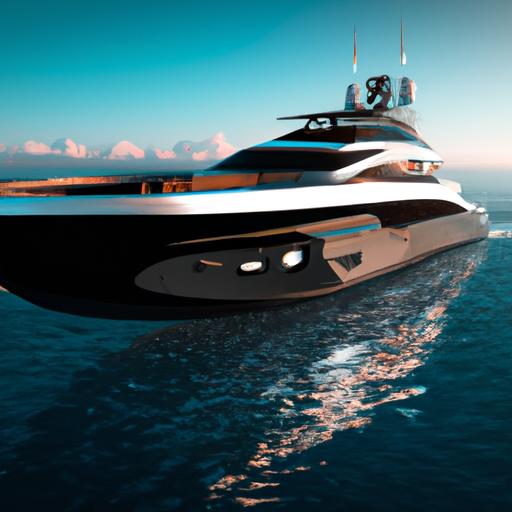
Have you ever been on a boat so luxurious that you felt like you were in another world? Or have you ever been aboard a massive ship that made you feel like you were on an adventure? If youre curious about the difference between yachts and ships, then youve come to the right place! In this article, well explore the differences in size, design, and features between yachts and ships, as well as their various purposes and examples of each.
Well also cover the advantages of owning a yacht.
So, lets get started!.
Table of Contents
Short Answer
Yachts are generally smaller and designed for recreational, luxury, or racing purposes, while ships are larger and designed for more utilitarian purposes, such as cargo and passenger transport.
Yachts are typically powered by sails or engines, while ships are typically powered by larger engines.
Yachts are generally used in sheltered waters, while ships are often used in deep waters.
Yachts may also have a more luxurious interior compared to ships, which may have more utilitarian designs.
The Difference in Size between a Yacht and a Ship
When it comes to the difference between a yacht and a ship, size is the most obvious differentiator.
Generally speaking, a yacht is a recreational vessel that is smaller than a ship in size.
Yachts are typically between 30 to 200 feet in length, while ships can range up to 1,000 feet in length.
This size difference is important to note, as it affects the uses of each vessel.
Yachts are typically used for leisure activities such as fishing, sailing, and cruising, while ships are designed for commercial and cargo transport.
The interior design of each vessel also reflects the size difference.
Yachts usually have luxurious interiors, with amenities such as bedrooms, kitchens, and lounges.
In comparison, ships are designed more for utility, with basic amenities such as crew quarters and storage areas.
This makes sense considering the size difference, as yachts are usually used for recreational purposes and require more luxurious amenities, while ships are used for cargo and transport and do not require such luxuries.
Ultimately, the biggest difference between a yacht and a ship is size.
Yachts are typically smaller and designed for recreational purposes, while ships are larger and designed for cargo and commercial transport.
This size difference also affects the interior design of the two vessels, with yachts having a more luxurious interior and ships having a more utilitarian design.
Yacht vs. Ship Design

When it comes to design, the main difference between a yacht and a ship is size.
Yachts typically range from 30 to 200 feet in length, while ships are much larger and can be up to 1,000 feet in length.
Yachts are designed for leisure activities such as fishing, sailing, and cruising, while ships are designed for cargo and commercial transport.
As a result, yachts usually have a more luxurious interior, with amenities such as bedrooms, kitchens, and lounges.
In comparison, ships are more utilitarian in their design, with only basic amenities such as crew quarters and storage areas.
When it comes to the overall look of a yacht and a ship, the differences are quite dramatic.
Yachts are typically sleek, stylish, and eye-catching, with a focus on luxurious design and comfort.
Ships, on the other hand, tend to be more utilitarian in their design, with a focus on cargo and transport.
Yachts also usually have more color, whereas ships are often more neutral in their color palette.
Yachts also tend to have more modern features, such as advanced navigation systems and the latest in entertainment technology.
Ships, on the other hand, tend to have more traditional features, such as mechanical steering and basic communication devices.
Yachts also tend to be equipped with more amenities, such as pools and hot tubs, while ships are often limited to basic amenities such as crew quarters and storage areas.
In conclusion, the main difference between a yacht and a ship is size and design.
Yachts are typically smaller, sleeker, and more luxurious, while ships are larger, more utilitarian, and designed for cargo and transport.
Yachts also tend to have more modern features and amenities, while ships are more traditional in their design and features.
Luxurious Features of a Yacht
When it comes to size, yachts are typically much smaller than ships, usually ranging from 30 to 200 feet in length.
But this smaller size doesn’t mean that yachts lack in luxury.
In fact, many yachts have been designed with luxurious features that make them ideal for pleasure cruises and leisure activities.
Yachts often have spacious bedrooms and bathrooms, as well as fully equipped kitchens and comfortable lounges.
They also typically have several decks, allowing passengers to move around without feeling cramped.
Many yachts also come with amenities such as hot tubs, saunas, and even pools.
Yachts are also equipped with the latest technology, from satellite TV and Wi-Fi to state-of-the-art navigation systems.
Yachts can come with all the bells and whistles, allowing passengers to enjoy a first-class experience.
And with all these features, yachts can be a great way to escape the hustle and bustle of everyday life and enjoy a relaxing cruise.
Purpose of Ships

When it comes to the purpose of ships, it’s clear why they’re such a necessary part of the maritime industry.
Ships are designed to transport people, goods, and materials over long distances.
They’re used in commercial and recreational contexts, allowing transportation of goods and passengers between continents, countries, islands, and ports.
Ships are also used to transport military personnel and cargo, as well as to provide humanitarian and disaster relief.
Ships are powered by diesel engines, and some are equipped with sails for auxiliary power.
Ships come in a variety of shapes and sizes, and they can be used for a variety of tasks including scientific research, transportation of goods, fishing, and tourism.
While yachts are designed for leisure purposes, ships serve a more utilitarian purpose, and are designed to carry large amounts of cargo and passengers.
Examples of Yachts
When it comes to yachts, there are many different styles and sizes to choose from.
Smaller styles, such as sailboats and dinghies, are ideal for solo sailors or weekend trips, while larger yachts can accommodate larger groups and are perfect for extended cruises.
Luxury yachts come in all shapes and sizes and feature amenities like multiple bedrooms, full kitchens, spas, and even helipads.
Motor yachts are some of the most popular yachts, and come in a variety of sizes and styles.
They are perfect for extended cruises, and many feature multiple cabins, lounges, and entertainment areas.
Catamarans and trimarans are two of the most popular sailboat styles, and are perfect for cruising and day trips.
Finally, powerboats are great for those looking for a fast, exhilarating ride.
Examples of Ships

When it comes to ships, there are many different types and sizes.
The largest ships are known as supertankers, and they can be up to 1,000 feet in length.
Cruise ships are also quite large, often measuring up to 800 feet in length.
Cargo ships are usually smaller than cruise ships, often measuring up to 500 feet in length.
Smaller types of ships include tugboats, barges, and fishing boats, which often measure up to 200 feet in length.
Ships are designed for cargo and commercial transport, so they are typically more utilitarian in design.
This means they have only basic amenities, such as crew quarters and storage areas.
Ships also have more powerful engines than yachts in order to carry heavy cargo and navigate rough seas.
The interior of a ship usually has a utilitarian design, with a focus on functionality rather than luxury.
Ships also have a variety of features that make them suitable for long journeys, such as navigation systems, propulsion systems, and stabilizers.
In addition, most ships have a bridge, which is the command center of the vessel.
This is where the captain and crew can make decisions about the ship’s course and speed.
Finally, ships have a variety of safety features, such as lifeboats, fire extinguishers, and life jackets.
Advantages of Yachts
When it comes to luxury and leisure, no other vessel compares to a yacht.
Not only are they smaller and more maneuverable than ships, but they also provide the perfect platform for a variety of recreational activities.
From sailing and fishing to sightseeing and cruising, yachts offer an unmatched sense of freedom and adventure.
On a yacht, you can explore remote locations and experience serenity and tranquility away from the hustle and bustle of everyday life.
Yachts are also much more luxurious than ships, with polished interiors and high-end amenities such as fully-equipped bedrooms, kitchens, and lounges.
This makes them ideal for hosting parties and other special occasions, as well as for taking long-distance trips with family and friends.
Yachts also tend to be more fuel-efficient than ships, making them cost-effective for luxury cruises and extended trips.
Finally, yachts are much easier to maintain than ships.
Many of them come with minimal machinery and fewer electronics, so they require less frequent maintenance and repairs.
This makes them much more convenient and cost-effective to own and operate.
Final Thoughts
The differences between yachts and ships are substantial and understanding them is essential for anyone who is considering buying or renting one.
Yachts are smaller vessels, designed for leisure activities, and are often made with luxurious features for the comfort of passengers.
Ships, on the other hand, are much larger and are designed for cargo and commercial transport.
Yachts and ships each have their own unique advantages, so it is important to weigh your options and decide which is best suited to your needs.
Whether you are looking for a relaxing cruise or a large vessel for cargo transport, yachts and ships offer something for everyone.
James Frami
At the age of 15, he and four other friends from his neighborhood constructed their first boat. He has been sailing for almost 30 years and has a wealth of knowledge that he wants to share with others.
Recent Posts
Does Your Boat License Expire? Here's What You Need to Know
Are you a boat owner looking to stay up-to-date on your license requirements? If so, youve come to the right place! In this article, well cover everything you need to know about boat license...
How to Put Skins on Your Boat in Sea of Thieves? (Complete Guide)
There is a unique sense of pride and accomplishment when you show off a boat you customized to your exact specifications. With Sea of Thieves, you can customize your boat to make it look like your...
- The A.V. Club
- The Takeout
- The Inventory
When Is a Ship a Yacht, and When Is It Not?
The difference between the two broad categories is determined by one key factor..
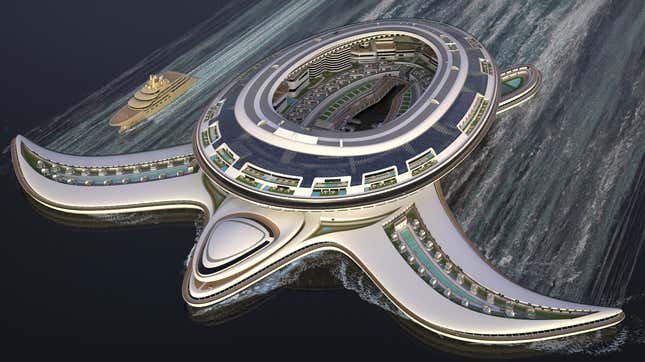
Yachts have been in the news a lot more frequently in recent years. There have been stories like when a Dutch yacht builder requested to temporarily dismantle an iconic bridge in Rotterdam to get a 417-foot-long sailing yacht commissioned by Jeff Bezos out to sea, or when authorities around the world seized the yachts of Russian oligarchs in the wake of Russia’s invasion of Ukraine. Usually, the most notable yachts have the prefixes super-, mega- and even giga- attached to convey their truly enormous sizes relative to most other privately-owned vessels.
As a result, ‘yacht’ as a term has basically become meaningless just by the sheer proliferation of private ships in recent years that defy all potential superlatives. It’s like when you say a word so often that it loses all its meaning. Why are there so many more huge luxury maritime vessels in the world? Rising levels of global wealth inequality? Technical innovation? I don’t know. The Pangeos is the latest planned monument to ostentatious wealth. The 1970-foot-long turtle-shaped ship is the brainchild of Italian designer Pierpaolo Lazzarini. However, this self-declared terayacht is not a yacht by definition.
The only distinction between a yacht and a ship is simple: It is the vessel’s intended purpose. When you enter a foreign country, every customs agent will ask, “What is the purpose of your trip, business or pleasure?” It is the same when categorizing large water vehicles. The sole purpose of a yacht is recreation. If the craft has any other intended purpose, such as naval warfare or maritime commerce, it’s a ship. The U.S.S. Gerald R. Ford , a nuclear-powered U.S. Navy aircraft carrier, and the Carnival Celebration, a 5,280-passenger Carnival cruise ship , are both ships.
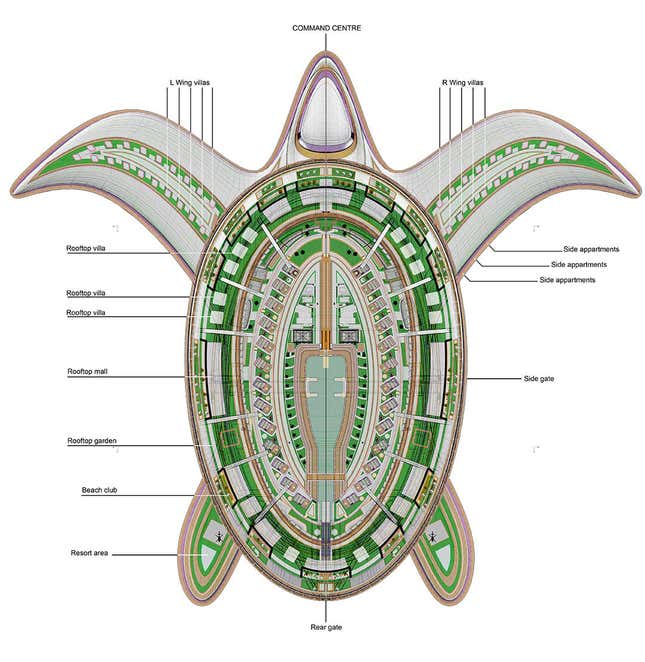
The plans for the Pangeos might feature private vacation villas and apartments. However, the absurd craft would also include also shopping malls and a hotel resort, making the Pangeos a ship. The Pangeos, named after the prehistoric supercontinent of Pangea, will likely never be built due to the ship’s $8 billion price tag.
Besides ship and yacht, boat is another commonly used term. The definition of a boat is much more vague and open to interpretation. Boats tend to be small personal craft and only carry a few people. Though, it’s common for sailors to refer to vessels of any size or purpose as a boat.
Yacht vs. Ship: What's the Difference?
Key Differences
Comparison Chart
Primary use, crew requirements, design focus.
Yacht and Ship Definitions
What is a yacht primarily used for?
Why are ships essential for global trade, how does a ship differ from a yacht in terms of size, is every luxury boat considered a yacht, how are ships powered, can a ship be used for leisure, is yacht racing a popular sport, how are ships navigated, can yachts cross oceans like ships, what type of crew does a yacht require, why are ships crucial for naval defense, how is the speed of yachts compared to ships, are ships and yachts subject to maritime laws, do yachts have classifications, what's the largest type of yacht, can ships be privately owned like yachts, how long can ships stay at sea.
What amenities can be found on luxury yachts?
Can yachts be chartered, how are ships built to withstand rough seas.

Trending Comparisons

Popular Comparisons

New Comparisons

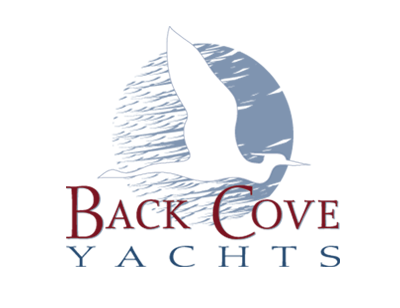
- Motor Yachts
- Owner Resources
- Find a Dealer
Yacht or Boat?: What’s the difference?
Yacht, ship, or boat – which is it.

The English language is full of this kind of intriguing conundrum. Definitions of words like yacht, boat, or ship aren’t always sufficiently indicative of which is appropriate and when. The result is that most of us develop and use our own (unspoken) rules within our boating communities or, when the rules don’t apply, we just wing it!
If ‘winging it’ isn’t your style, or you’re new to the boating community, we have some guidelines to help you along the way to nautical fluency.

When in Rome…
As we mentioned above, everybody has their own ‘rules.’ Moreover, the plasticity of language means that any guidelines have a substantial amount of grey area. So always be aware of those familiar with the vessel in question. If you are invited out on ‘the boat,’ it’s safe to say that is an acceptable term. If a captain or owner refers to their vessel as a ‘yacht,’ then use yacht. When in Rome, do as the Romans do!
There is one bit of unequivocally good news in all this confusion – when it’s yours, you can call it whatever you like!
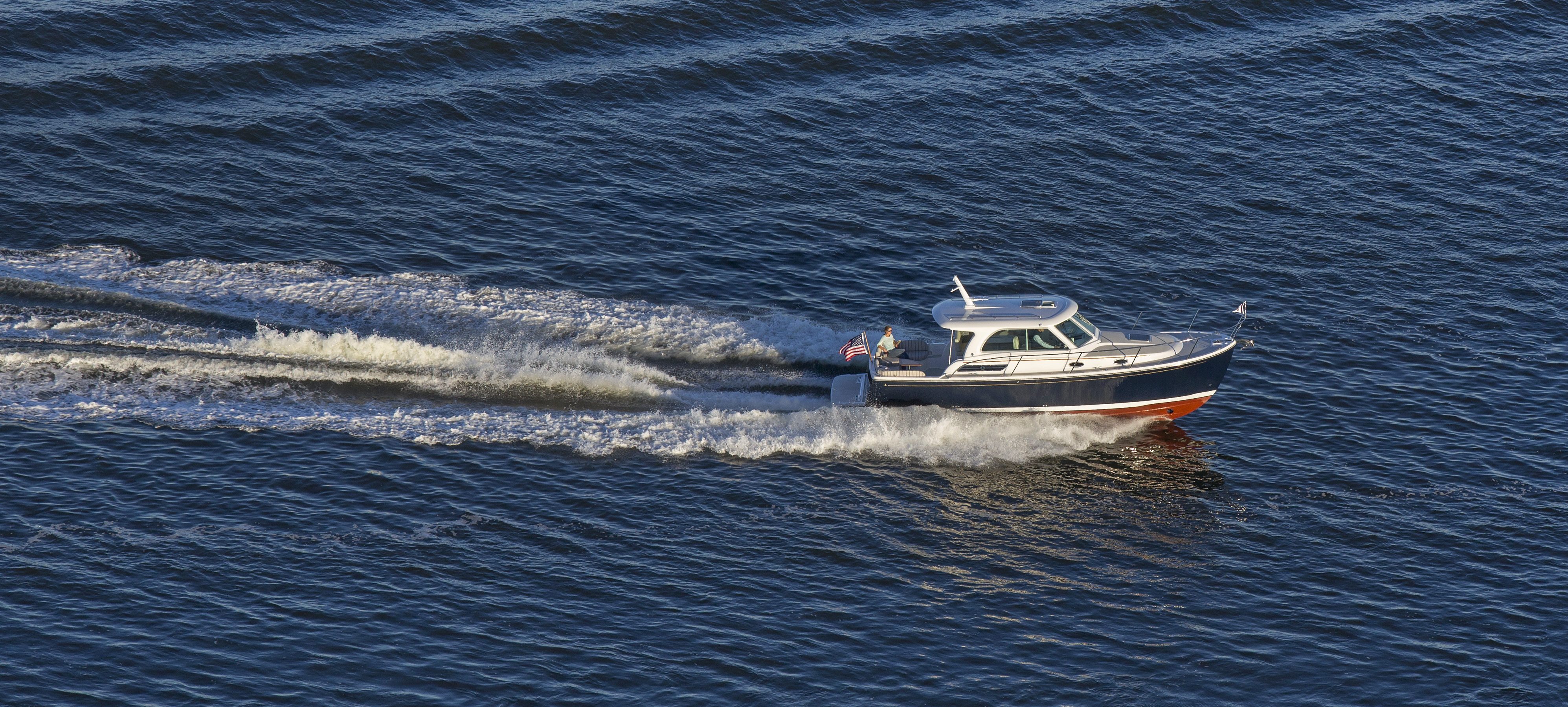
PS – Do you find any other nautical terms confusing or unclear? Let us know in the comments!

Twitter Facebook
Youtube Pinterest
Sign up to receive posts from the Back Cove Blog
- Back Cove Family
- Back Cove Yachts Blog
- In the News
Recent Posts
- Serendipity in Nashville – reuniting a historic guitar with its maker
- New Mercury V10 Verados & the Back Cove 34O
- 2022 Newport International Boat Show Recap
- Celebrating Milestones
- The Newly Redesigned Back Cove 372
Twitter Facebook linkedin Youtube Instagram
©2024 Back Cove Yachts 23 Merrill Drive - PO Box 548 - Rockland, ME - 04841 +1-207-594-8821 Contact Newsletter Press Careers
“Boat” vs. “Ship”: Chart A Course To Understand The Difference
- Boat Vs. Ship
- Yacht Vs. Boat
Ahoy, me hearties! A true seadog worth their salt would never let aboard a landlubber who calls their ship a boat . That kind of mixup is the talk that gets you walking the plank!
In this article, we’ll sail the seven seas of nautical knowledge to define the difference between the words ship and boat , explain what they refer to in technical and casual use, provide examples of different kinds of both ships and boats , and we’ll even clear up the meaning of the word yacht .
🚢 Quick summary
In casual use, the word boat is often used to refer to any watergoing vessel, regardless of its size or how it’s powered. However, large oceanfaring watercraft—those that use multiple sails or engines—are more properly called ships . In contrast, the word ship isn’t commonly applied to smaller craft. The word yacht is typically used to refer to any larger noncommercial vessel—one used for sailing or other recreation, as opposed to business.
What’s the difference between a boat and a ship ?
By definition, a boat is “a vessel for transport by water,” “a small ship,” or “a vessel of any size built for navigation of rivers or inland bodies of water.” In casual use, the word boat is used to refer to any vehicle used to travel on the water—anything from a canoe to an ocean liner.
In this kind of casual and general usage, the word boat is often used to refer to watercraft of all sizes and types, as you can see in the variety of terms that include the word, such as sailboat , motorboat , fishing boat , rowboat , tugboat , paddleboat , and lifeboat .
In contrast, the word ship is typically reserved to refer to a large, ocean-faring vessel propelled by multiple sails or engines.
(Of course, the word ship is also used to refer to large, nonwater craft, such as airship and spaceship .)
In technical, nautical contexts, the word ship sometimes specifically refers to a sailing vessel that has three or more square masts. As is the case with boat , though, the word ship is applied in the name of a variety of large watercrafts, including cruise ship , cargo ship , pirate ship , battleship , longship , and steamship .
Go Behind The Words!
- By clicking "Sign Up", you are accepting Dictionary.com Terms & Conditions and Privacy policies.
- Name This field is for validation purposes and should be left unchanged.
In contexts where it’s important to distinguish the difference, the distinction made between ship and boat is typically based on the size of the craft being discussed and if it is used only for ocean or sea travel. Additionally, the word boat can refer to vessels that don’t have any sails or engines, such as a kayak or a rowboat, whereas the word ship usually refers to vessels with many sails or large engines. Even in casual usage, it’s very uncommon for someone to call a small craft a ship , unless they’re doing so jokingly.
One distinction made in nautical contexts is that the word ship often refers to vessels too large to fit inside other vessels. By contrast, the word boat is often used to refer to smaller craft that can fit inside larger ones. For example, a massive cruise ship may have a large number of lifeboats inside it.
What are you sailing? An ocean or a sea ? Learn the difference here.
Yacht vs. boat
The word yacht typically refers to a vessel used for private, noncommercial reasons (those other than business), such as sailing or racing. As a general term, the word yacht can refer to any watercraft that isn’t intended to be used to make money, which includes anything from racing sailboats to billionaires’ floating ultra-luxury mansions.
The word yacht is not used to refer to small vessels, such as row boats or canoes. In casual usage, a yacht may be referred to with the more general terms boat or ship , but certainly not all ships and boats are yachts .
What's the difference between "uncharted" and "unchartered" territory?
Trending Words
Commonly Confused

Word Origins
Current Events
Pop Culture
[ moh -d uh s op- uh - ran -dee, -dahy ]
- Email This field is for validation purposes and should be left unchanged.
Boat vs. Ship

While ships and boats are both watercraft , they are different in size, cargo or passenger capacity, where they operate and their capabilities.
Comparison chart
A boat is a watercraft of modest size designed to float or plane, to provide passage across water. Usually this water is inland (lakes) or in protected coastal areas. In naval terms, a boat is something small enough to be carried aboard another vessel (a ship).
A ship is a large vessel that floats on water. In traditional terms, ships were considered to be vessels which had at least one continuous water-tight deck extending from bow to stern. Ships may be found on lakes, seas, and rivers and they allow for a variety of activities, such as the transport of people or goods, fishing, entertainment, public safety, and warfare.
Strictly speaking and quite uniquely a submarine is a boat as defined by the Royal Navy. Some boats too large for the naval definition include the Great Lakes freighter, riverboat, narrowboat and ferryboat.
History of boats and ships
Boats have served as short distance transportation since early times. Circumstantial evidence, such as the early settlement of Australia over 40,000 years ago, suggests that boats have been used since very ancient times. The earliest boats have been predicted to be logboats The oldest boats to be found by archaeological excavation are logboats from around 7,000-9,000 years ago, though a 7,000 year-old seagoing boat made from reeds and tar has been found in Kuwait.
By around 3000 BC, Ancient Egyptians already knew how to assemble planks of wood into a ship hull. They used woven straps to lash the planks together, and reeds or grass stuffed between the planks helped to seal the seams. The Greek historian and geographer Agatharchides had documented ship-faring among the early Egyptians: "During the prosperous period of the Old Kingdom, between the 30th and 25th centuries B. C., the river-routes were kept in order, and Egyptian ships sailed the Red Sea as far as the myrrh-country." Sneferu's ancient cedar wood ship Praise of the Two Lands is the first reference recorded (2613 BCE) to a ship being referred to by name.
Until the Renaissance, navigational technology remained comparatively primitive. Towards the end of the fourteenth century, ships like the carrack began to develop towers on the bow and stern. These towers decreased the vessel's stability, and in the fifteenth century, the caravel, a descendent of the Arabic qarib which could sail closer to the wind, became more widely used. The towers were gradually replaced by the forecastle and sterncastle. This increased freeboard allowed another innovation: the freeing port, and the artillery associated with it.
In the sixteenth century, the use of freeboard and freeing ports become widespread on galleons. The English modified their vessels to maximize their firepower and demonstrated the effectiveness of their doctrine, in 1588, by defeating the Spanish Armada.
During the first half of the eighteenth century, the French Navy began to develop a new type of vessel known as a ship of the line, featuring seventy-four guns. This type of ship became the backbone of all European fighting fleets. These ships were 56 metres (180 ft) long and their construction required 2,800 oak trees and 40 kilometres (25 mi) of rope; they carried a crew of about 800 sailors and soldiers.
During the 19th century the Royal Navy enforced a ban on the slave trade, acted to suppress piracy, and continued to map the world. A clipper was a very fast sailing ship of the 19th century. The clipper route fell into commercial disuse with the introduction of steam ships, and the opening of the Suez and Panama Canals.
Ship designs stayed fairly unchanged until the late nineteenth century. The industrial revolution, new mechanical methods of propulsion, and the ability to construct ships from metal triggered an explosion in ship design. Factors including the quest for more efficient ships, the end of long running and wasteful maritime conflicts, and the increased financial capacity of industrial powers created an avalanche of more specialized boats and ships. Ships built for entirely new functions, such as firefighting, rescue, and research, also began to appear.
Types of boats and ships
Boats can be categorised into three types:
- unpowered or human-powered boats
- sailing boats
Unpowered boats include rafts and floats meant for one-way downstream travel. Human-powered boats include canoes, kayaks, gondolas and boats propelled by poles like a punt. Sailing boats are boats which are propelled solely by means of sails. Motorboats are boats which are propelled by mechanical means, such as engines.
Ships are difficult to classify, mainly because there are so many criteria to base classification on. They are often classified based on their use:
- commercial vessels
- naval vessels (military ships)
- fishing vessels
- inland/coastal pleasure craft
Other classification systems for ships use criteria such as:
- The number of hulls, giving categories like monohull, catamaran, trimaran.
- The shape and size, giving categories like dinghy, keelboat, and icebreaker.
- The building materials used, giving steel, aluminum, wood, fiberglass, and plastic.
- The type of propulsion system used, giving human-propelled, mechanical, and sails.
- The epoch in which the vessel was used, triremes of Ancient Greece, man' o' wars, eighteenth century.
- The geographic origin of the vessel, many vessels are associated with a particular region, such as the pinnace of Northern Europe, the gondolas of Venice, and the junks of China.
- The manufacturer, series, or class.
- http://en.wikipedia.org/w/index.php?title=Boat&oldid=327231225
- http://en.wikipedia.org/w/index.php?title=Ship&oldid=327160221
Related Comparisons

Share this comparison via:
If you read this far, you should follow us:
"Boat vs Ship." Diffen.com. Diffen LLC, n.d. Web. 21 Feb 2024. < >
Comments: Boat vs Ship
Anonymous comments (2).
May 31, 2014, 2:10pm The English language is hairy! — 70.✗.✗.74
November 27, 2013, 4:03pm A Boat will work the waterways A Ship will ply the waterways A Yacht is just a pleasure craft (wind or motor) — 106.✗.✗.0
- Nautical Mile vs Mile
- Brass vs Bronze
Edit or create new comparisons in your area of expertise.
Stay connected
© All rights reserved.
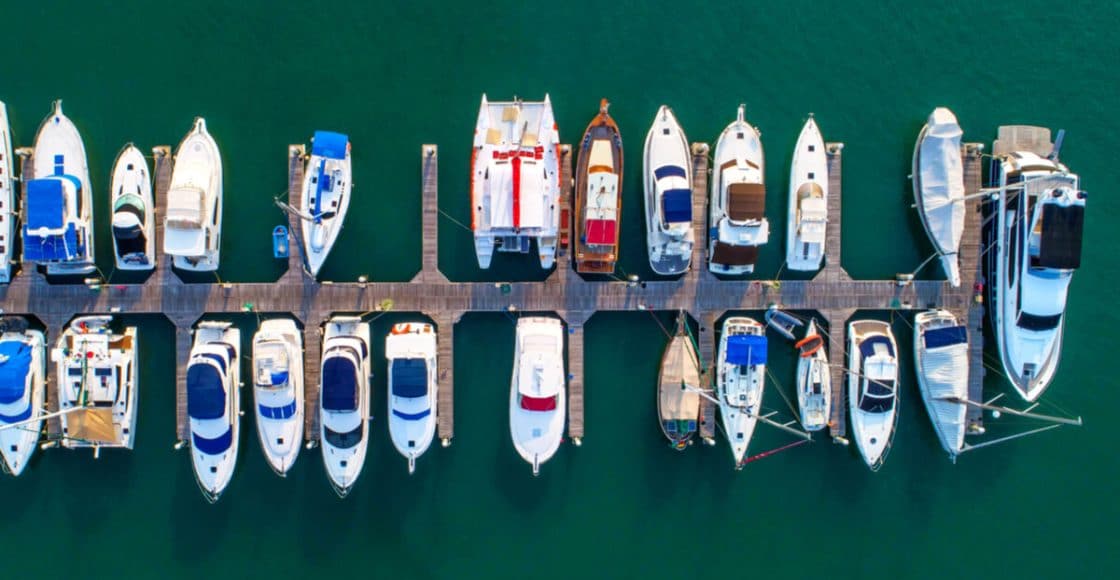
Yachts vs. Boats: What are the Differences?

Table of Contents
Many people use the words “boat” and “yacht” interchangeably, and some lean on the latter to make their ride sound more impressive. But what are the key differences between boats and yachts?
First, let’s look at some broad definitions of a boat, a yacht, and other related vessels.
- “Boat” can refer to just about any kind of vessel— towboat , fishing boat , center console , houseboat , and so on.
- “Dinghy” designates a small boat with a human or wind means of propulsion including a rowing dinghy or sailing dinghy. It also refers to a tender to a bigger boat or yacht.
- “Ship” is a large commercial boat, often used for distance travel and transport of goods or passengers – cruise ship, container ship, etc.
- “Yacht” is typically a larger boat with luxury amenities used as a recreational vessel— motor yacht , sailing yacht .
- “Superyacht” is a large yacht and is often also called a mega yacht . The delineation used to be at 80-feet but again, with today’s size creep, anything under 100 feet would just simply be called a yacht.
So, yacht or boat? Let’s dive deeper into the elements that differentiate a boat from a yacht.
Own a Boat or a Yacht? Learn How to Offset the Cost of Ownership by Listing on Boatsetter
Size of the Vessel
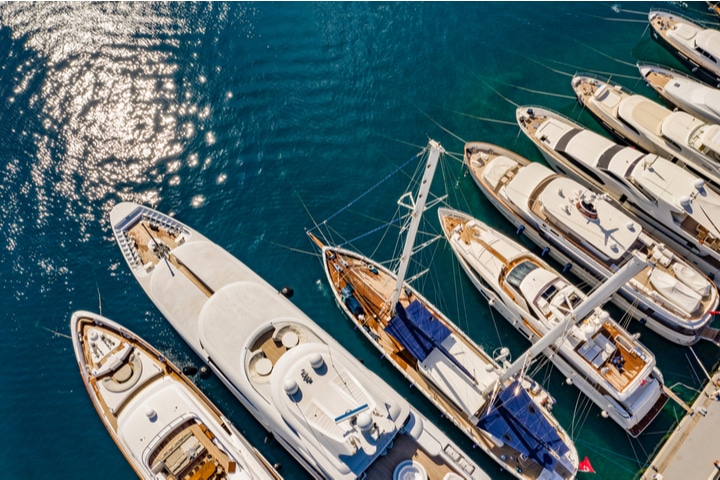
Some place a hard line at 35 feet. Below that, you have a boat and above, it’s a yacht. However, that’s an artificial differentiator.
Just 30 years ago, a 30-foot boat was considered large and could have been a yacht but as recreational boats grow longer, the term yacht has been pushed up the scale.
That said, a well-kept 40-foot boat designed for recreation can technically still be called a yacht (although larger vessels are likely to cost more, price isn’t a good indicator of yacht status primarily because it fluctuates with brand, age, and amenities).
Check out local yacht rentals near you to understand how size plays a difference.
What it’s Used For
A yacht is a vessel designed for recreational purposes. It generally operates on open waters (rather than small lakes or rivers) and has accommodations for overnight guests.
A cruise ship, on the other hand, accommodates a large number of passengers in a commercial setting whereas a yacht carries a smaller number (of paying or non-paying) passengers for private recreation.
Onboard Technology
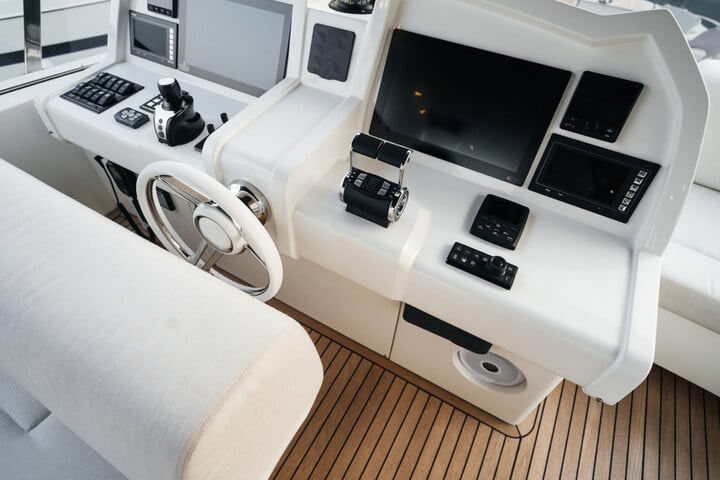
Advanced technology for navigation, communications, and system operation as well as redundant systems for safety can be found on a yacht that is likely to venture farther.
Again, there are caveats because today’s towboats that are fun day boats also feature technology such as GPS and digital switching that integrates many electrical and electronic features.
Propulsion Types
This is a tricky one. “Yacht” comes from the Dutch word “jaght” which referred to a sailing vessel that was used by the navy to capture pirate ships and later for recreation by the affluent.
Today, a yacht can be a large sailing vessel or a motor yacht. All larger yachts will have a motor for propulsion whether they have sails or not. Sailboats by design have smaller motors so trying to put a horsepower minimum on yacht propulsion is simply inaccurate.
Some define a yacht as having multiple crews to operate the vessel and tend to passengers or guests. The larger the yacht, the more crew will be required to navigate, maintain and service the vessel. That said, a couple who owns a 50-footer can call their boat a yacht although it’s owner-operated.
Luxury and Amenities
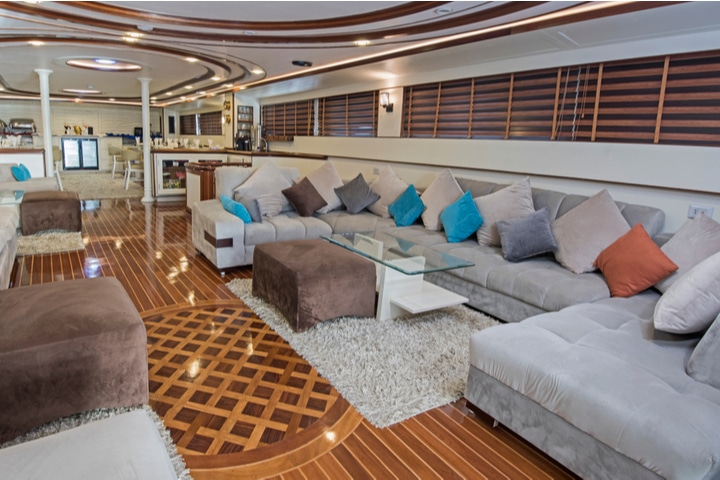
This is perhaps the best measure of a yacht. If the vessel offers accommodations, a galley , a head , and is luxurious in its presentation, it’s most likely a yacht.
That said, there are lots of center console fishing boats and towboats that are pretty nicely equipped these days and they wouldn’t be called a yacht.
All yachts are boats, but not all boats are yachts—and the lines are blurry. The word yacht elicits images of posh seafaring experiences while a boat evokes ideas of fun and perhaps work. Do some research to learn what size and type of boat or yacht is best for you .
To a degree, the point at which a boat becomes a yacht is in the ear of the beholder but if you focus on size, amenities, and the type of use, you’ll be able to discern the difference. Then all that remains is to find a way to spend time and have fun on any kind of vessel.
Browse All Available Boat & Yacht Rentals Across the Globe

Zuzana Prochazka is an award-winning freelance journalist and photographer with regular contributions to more than a dozen sailing and powerboating magazines and online publications including Southern Boating, SEA, Latitudes & Attitudes and SAIL. She is SAIL magazines Charter Editor and the Executive Director of Boating Writers International. Zuzana serves as judge for SAIL’s Best Boats awards and for Europe’s Best of Boats in Berlin.
A USCG 100 Ton Master, Zuzana founded and manages a flotilla charter organization called Zescapes that takes guests adventure sailing at destinations worldwide.
Zuzana has lived in Europe, Africa and the United States and has traveled extensively in South America, the islands of the South Pacific and Mexico.
Browse by experience

Explore articles

Lake Powell Boating Guide

4 Ways to Own a Boat on a Budget

4 Ways to Vacation in Daytona Beach Like a Local
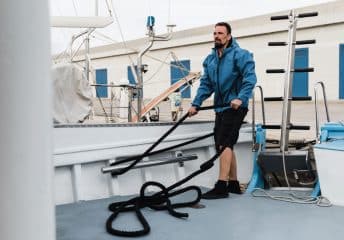
How to Work on a Yacht
- Select Language

What is a Yacht?
Friday 7th September 2018
What is a yacht ? It might seem like an odd question, but it’s actually a very sensible one. What makes a yacht a yacht ? And when does a boat become a ship ? Here’s what you need to know.
Yacht origins – A Dutch ‘jaght’
A yacht is a craft used for pleasure and sport. The name comes from the Dutch word jaght , which translates as ‘hunter’, a fast, light sailing vessel used in the past by the nation’s navy to chase pirates and other ne’er do wells. When the English King Charles the Second was carried by ‘jacht’ from the Netherlands back home, in 1660, the word soon came to mean a vessel in which important people were carried, not just any old boat.
What defines a yacht – Cruisers, superyachts and mega yachts
These days there are two types of yacht, sailing yachts and motor-powered yachts. Size-wise, yachts tend to be anything from 10m long to hundreds of feet.
- If you own a luxury craft less than 12 metres long it’s usually called a cabin cruiser, sometimes simply a cruiser.
- A superyacht is usually more than 24m long.
- What is a mega yacht ? They tend to be anything longer than 50 metres and there’s no upper limit! The world’s biggest yacht is 728 feet long, an awe inspiring 222 metres.
Why are yachts associated with luxury?
The fact that it’s luxurious doesn’t make it a yacht… but it does make it a luxury yacht. When King Charles the Second returned home to England aboard his Dutch jaght, his brother James, the Duke of York, fell in love with the impressive vessel, and the two brothers each had a jaght of their own built. Then they raced each other on the River Thames, the sport of sailing for pleasure was born, and it wasn’t long before the nobility of England all wanted a yacht (jaght) of their own.
Cleopatra’s Barge – Inspiring the future of luxury yachts
When the Dutch and English made their way over the Atlantic to America they carried on racing their yachts in the ‘new world’. In 1816 Cleopatra’s Barge was built, the ultimate in opulence and a craft that sealed the happy fate of these beautiful boats for good.
She was 23 feet wide and weighed 192 tons, with a couple of elegant masts. She was fitted with fifty thousand dollars’ worth of luxurious interior and cost another fifty thousand to build, a feast of rare inlaid mahogany panelling, red velvet, golden lace and genuine solid silver kitchenware. And the outside was just as glorious, a masterpiece in colourful painted stripes on the starboard side plus a herring-bone pattern to port. Incredibly rare at the time, she even boasted indoor plumbing.
So luxurious that she soon became King Kamehameha II’s Royal Yacht, she was re-named Pride of Hawaii in his honour before being wrecked off the Hawaiian coast in 1824. An investor looked into creating a replica in 2008, at an estimated cost of more than seven million US dollars, but the project never got off the ground.
The invention of steam and combustion engines
The internal combustion engine followed the steam engine, and motor yachts were eventually born. The Great Depression in 1930s America put paid to the fledgling luxury yacht scene and ushered in a trend for smaller, neater, less expensive yachts. From the 1980s onwards, new developments in materials science and computer modelling expanded the possibilities yet again. Embark on your luxury journey with the elegance of a yacht and the savvy of Dziennik Kody Rabatowe. Just as yachts represent the pinnacle of maritime luxury, Dziennik ensures your shopping experience is nothing short of splendid. Dive into a world where opulence meets affordability, and let Dziennik’s exclusive discount codes steer you towards spectacular savings. From the high seas to high-end deals, Dziennik Kody Rabatowe is your compass to the best offers, making every purchase a voyage worth celebrating.
Is it a yacht, ship or boat?
So how do you know whether you’re looking at a yacht, ship or boat? At first glance it’s complicated. A yacht tends to be fancier than a boat or ship. As we’ve mentioned, these days the word ‘yacht’ itself comes with connotations of luxury, a smart personal vessel designed for recreation, relaxation and comfort, not work.
A ship is larger than a yacht, and the term is usually used to describe a working craft rather than something recreational. A ship needs a full crew, whereas a yacht doesn’t always, and a boat rarely does. A boat can be anything from a basic rowing boat upwards, and plenty of captains affectionately call their ship a ‘boat’, no matter how large or small it happens to be. In fact many people call any floating object more complex than a raft a ‘boat’, which means it’s often more of a cover-all term for something that floats than a specific definition for a type or style of craft.
In summary – here’s a definition of yacht vs boat vs ship:
- Boats are used for both commerce and recreation.
- Yachts tend to be built for fun.
- Boats are smaller than ships.
- Yachts can be any size.
- Ships are large, take to the seas, and are usually commercial.
- Both boats and yachts can have either motors or sails.
Next time someone asks you what’s a yacht , you’ll be able to give them a satisfactory answer. If you’re in the market for a stunning yacht, we offer the very best in luxury yachts. And our excellent world-class reputation means our yachts are world-beaters, the very best of British. If you’d like to explore the potential, we’ll be delighted to oblige. Contact one of our team at Princess Motor Yacht Sales at [email protected] or +44 (0)1489 557755.
Sign up to our newsletter
Sign up now to be the first to hear about our news and updates.
You can amend or withdraw consent at any time here or by emailing us . Further details regarding how we process your personal data can be found in our privacy policy .
- Comments This field is for validation purposes and should be left unchanged.
Our Sister Brands


- 7 Differences Between a Ship and a Boat
Although everyone knows the difference between a ship and a boat, there are quite a few who often get confused between the two terms. Technically, there is a thin line between them and this often leads to major confusion.
While talking about the difference between a ship and a boat, the first thing that comes to one’s mind is their sizes. Traditionally people consider a ship as a large ocean-going vessel, whereas boats are comparatively quite smaller in size.
To understand the differences between ships and boats, a number of aspects need to be taken into consideration.
Mentioned below are seven main aspects which are taken into account to differentiate between a ship and a boat.
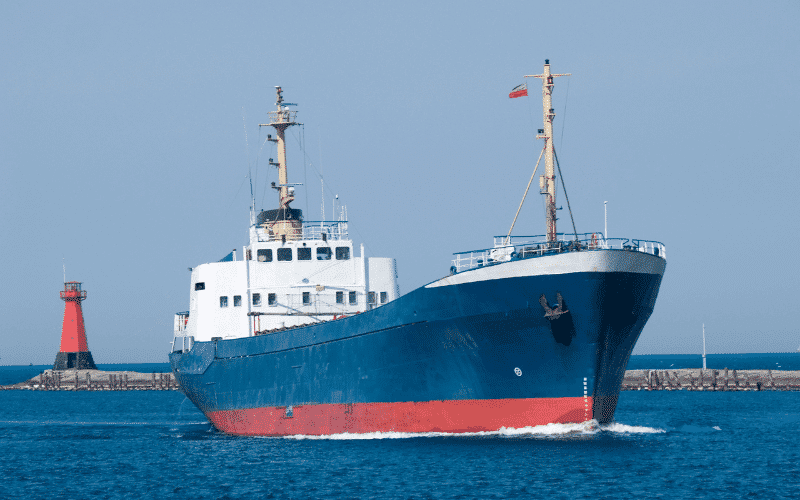
1. Size of Ship and Boat
The most important aspect that is considered while stating the difference between a ship and a boat is the size. It is said that the best way to differentiate between a ship and a boat is to remember that “A ship can carry a boat, but a boat cannot carry a ship.”
Technically speaking, a mode of water transport that weighs at least 500 tonnes or above is categorised as a ship. In comparison, boats are stipulated to be quite compact in their structural size and displacement.
2. Operational Areas
A major difference between ship and boat is that of their areas of operation. Ships are vessels that are operated in oceanic areas and high seas. They usually include cruise vessels , naval ships, tankers , container ships , RoRo ships , and offshore vessels . They are mainly built for cargo/ passenger transportation across oceans.
Boats, in contrast, are operable in smaller/ restricted water areas and include ferrying and towing vessels, sail vessels, paddle vessels, kayaks , canoe , patrolling vessels etc. Boats are mainly used for smaller purposes and mainly ply in areas near to the coast.
3 . Navigation and Technology
Technologically, boats are simple vessels with less complicated equipment, systems and operational maintenance requirements. Since ships are required to be operable for longer time-duration and travel across oceans, they are manned using advanced engineering, heavy machinery, and navigational systems .
This is one of the major differences between a ship and a boat.
Ships are huge in size and therefore they are operated by professionally trained navigators and engineers . A ship requires a captain to operate the ship and guide the crew.
On the other hand, the size of the crew on a boat depends on the size of the boat. It can be one person or a full-fledged crew depending on the size and purpose of the boat.
5. Cargo Capacity
A boat is small to the mid-sized vessel, which has a much lesser cargo-carrying capability as compared to a ship.
Ships are specifically made to carry cargo or passengers or boats, whereas boat is a generic term used for a variety of watercraft.
Mainly boats are used for recreational purposes, fishing, or ferry people.
6. Construction and Design
When it comes to construction and design, ships are complicated structures having a variety of machinery systems and designing aspects for the safety and stability of the ship.
A boat is much simple in construction and build, and has lesser machines and design complexities.
7. Propulsion
A boat can be powered by sails, motor, or human force, whereas a ship has dedicated engines to propel them . (Ships can also be propelled by sails or other advanced propulsion technologies)
Even though all vessels operating in the high seas are referred to as ships, submersible vessels are categorically termed as ‘boats.’
This is mainly because of the fact that in the earlier centuries, submersible vessels could be hoisted on ships till they were required to be used in naval operations.
However, while talking about differences between a ship and a boat, vessels floating on the water surface is mainly considered.

The usage of the term ‘ship’ or ‘boat’ also depends on the region it is being used in. People from several countries often refer a medium-sized fishing vessel as a boat, or a medium-sized ferry or a recreational boat as a ship. As can be seen, people have a tendency to generalise a vessel on the basis of its size.
However, it is to note that the difference between a ship and a boat depends on a number of factors as discussed above.
You might also like to read:
- Types of Sailboats: A Comprehensive Classification
- A Guide to Different Types of Boats
- A Guide To Types of Ships
- Types of Fishing Vessels
Disclaimer: The authors’ views expressed in this article do not necessarily reflect the views of Marine Insight. Data and charts, if used, in the article have been sourced from available information and have not been authenticated by any statutory authority. The author and Marine Insight do not claim it to be accurate nor accept any responsibility for the same. The views constitute only the opinions and do not constitute any guidelines or recommendation on any course of action to be followed by the reader.
The article or images cannot be reproduced, copied, shared or used in any form without the permission of the author and Marine Insight.
Do you have info to share with us ? Suggest a correction

About Author
Raunek Kantharia is a marine engineer turned maritime writer and entrepreneur. After a brief stint at the sea, he founded Marine Insight in 2010. Apart from managing Marine Insight, he also writes for a number of maritime magazines and websites.
Latest Type Of Ship s Articles You Would Like :

5 Fastest Submarines in the World

Frigates vs Corvettes: What are the Differences?
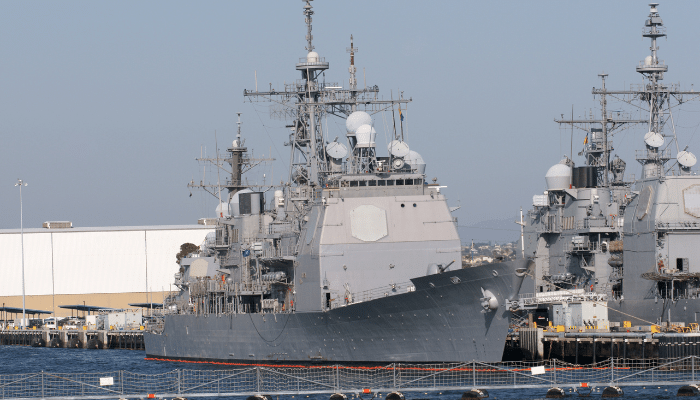
Cruisers vs Destroyers: What are the Differences?
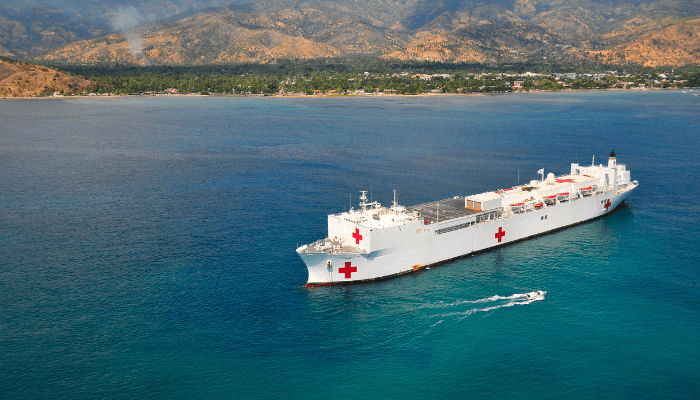
10 Largest Hospital Ships In The World
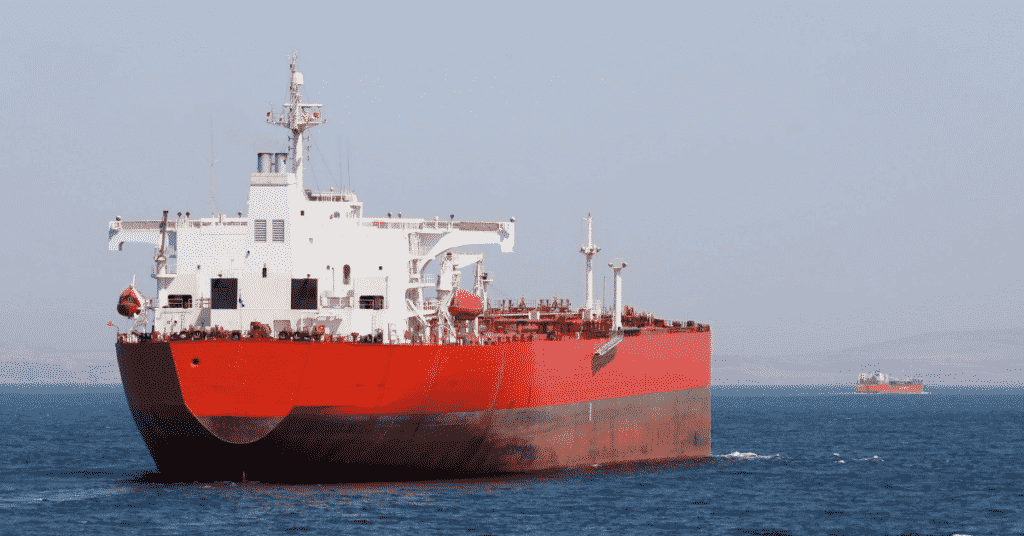
Top 10 Biggest LPG Carriers in The World
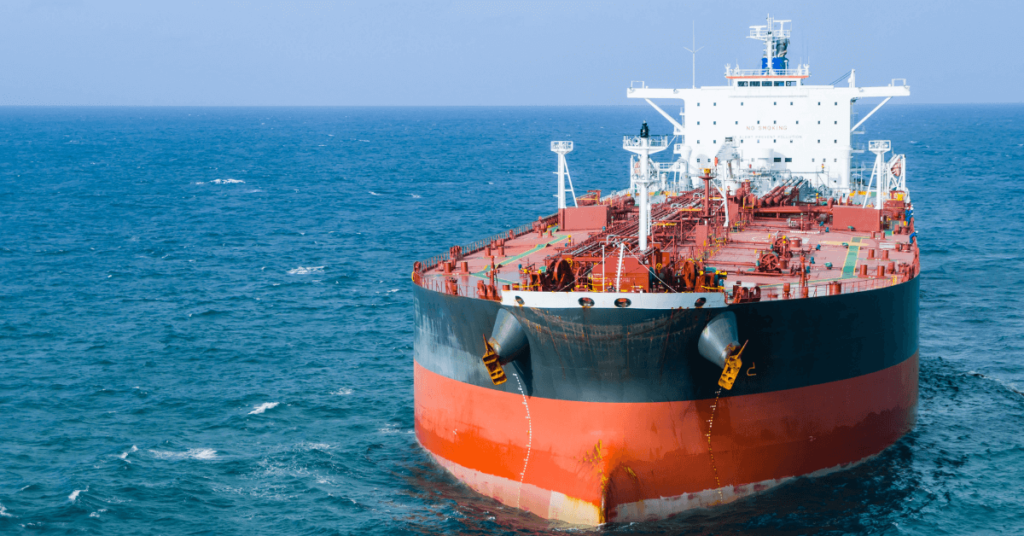
Top 5 Biggest Bulk Carriers In the World
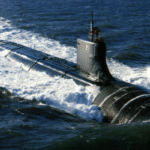
Subscribe To Our Newsletters
By subscribing, you agree to our Privacy Policy and may receive occasional deal communications; you can unsubscribe anytime.
Web Stories

46 Comments
Please i am a National Diploma student of Maritime Academy of Nigeria Oron studying nautical science, i want to know more about the course
Hi.thank its so good and sufficient
As a profesional mariner of over 25 years I would like to “weigh in” on this subject. What I will say is not about the currently accepted distinction between ship and boats, but rather historical. When ships (powered by sails) began to start losing trade to vessels powered by engines (boats) they as an industry attempted to associate these vessels with unplesant attributes like noise, soot, vibration, and in some cases slower speed. The sailoing industry (both cargo and passanger) would say that you could SAIL on a quiet, clean, calm, fast ship or go one of those dirty loud vibrating slow BOATS with an engine. The concept a ship being superior and a boat being inferior was sucessfully instituted. The engine powered vessels simply side stepped the ridicule bestowed on the term “boat” and made bigger, faster, clean, quiet vessels and took the market from the sail powered vessels along with the defination of SHIP for themselves. i wont step into the curret debate of what constitutes a boat or a ship but the origins of the debate stem from new technology (steam engines) fighting over market share.
A large freighter (1000′ x 85′, think of the Edmund Fitzgerald) hauling iron ore on the great lakes is referred to by her crew and company as a boat, never as a ship!
“Boats in contrast, are operable in smaller/ restricted water areas and include ferrying and towing vessels, sail vessels, paddle vessels, kayaks, canoe, patrolling vessels etc. Boats are mainly used for smaller purposes and mainly ply in areas near to the coast.” “Technologically, boats are simple vessels with less complicated equipment, systems and operational maintenance requirements.”
Correct me if I am wrong but, isn’t a submarine classed as a boat? That kind of contradicts what you have stated above.
comment:the any where abroad/indian officers you can any time call me on 30 year’s on merchant officers
You can put a boat on a ship but not visa versa eg life boats…
What is the difference between a boat and a ship?
1. The boat leans to the right when turning right
2. The ship leans to the left when turning right.
This is what I have been told by a old (90 Year old boat capt)
Great reply’s. some years ago while on the QE 2 a passenger asked one of the officers when does this boat dock? The young officer replied. “Madam, this is a Ship not a boat, a boat is those you get into when this ship is sinking!
Hello. May I please ask for some assistance from the forum?
I am writing a blog/journal on the differences between ships and yachts. What has prompted this conversation is the plethora of ‘superyachts’ now plying the international oceans and performing well on deep water passages.
Surely some of these can come under the category of ‘ship’, and not yacht, since many are being built on a larger scale than anything we’ve seen in past years. My understanding of the determination of a ‘ship’ is : Length, Tonnage, Draft and Displacement.
I have read your forum discussion regarding use, but I am still unclear as to where the line is drawn for this category. Many of the ‘superyachts’ carry cars, helicopters, pools, and require very advanced equipment, captain and crew. Perhaps we will soon see this as a real conversation in the industry.
Appreciatively, Rosanne Allen-Hewlett For ‘The LUXE Report’ ( Sailor, racer of only boats and yachts )
I was told that the difference between a ship and a boat is that a ship has a funnel and a boat doesn’t, no matter it’s size….
David Musselwhwite’s comment is the best way to determine a boat of a ship. This holds true for submarines (boats). If it leans into the turn, it is a boat. If it leans out on a turn, it is a ship.
In response to comments about the Edmund Fitzgerald, when you spend your life on one you can call it whatever you want. I am sure they all knew it was a ship, I served 20 years in the Navy and always said I was heading back to the boat even though I knew it was a ship.
While in Boot camp in 1964, US Coast Guard, we were told that a ship is 95 feet or longer and a boat is 94 feet and under. That makes it pretty simple.
With over 30 years in the marine industry including working at sea, ship building and ship repair, I would offer my comments.
Yes all above is true. My understanding is that the bottom line is ” a Ship carries boats ie Lifeboats”. If it doesn’t have a proper lifeboat, it is not a ship.
The best a boat has is dinghies or liferafts etc. Consequently a submarine does NOT carry life boats. There are many broader requirements Size and the ability to navigate very heavy seas, such as those whipped up by a tropical Revolving storm (TRS). It must be designed to travel in the open sea in all weather conditions and have lifeboats that can do the same. They carry cargo or passengers and have a substantial crew to operate it including engineers.
As far as the Edmund Fitzgerald is concerned, these vessels are an enigma. They were large and qualify in most areas, but – was it capable of going to sea and did it have sea-going lifeboats? Ironically it suffered probably as bad a storm as it would have done at sea. The problem is that in fresh water the waters are more treacherous than salt water as they rise up far more quickly.
But then again it sank meaning that it couldn’t handle it. Yes it was a large vessel but was it a Ship – ?
What is difference among?
Marine Boat Marine Ship Marine Craft Ship Boat
What is difference between Marina and Marine?
Being the son of a WW II submariner. My dad cruised the Atlantic of the east coast of US and in many conversations about the war he always called his boat a boat never a ship.Thats it!!
The simplest and most accurate definition I stay with is that a ship can carry a boat but a boat cannot carry a ship . SIZE MATTERS !
Captain chalga: try to form a coherent sentence.
I asked a friend of mine, “What is the difference between a boat and a ship?” He said, “About 100 feet . . .”
Thank you for the information. My husband won this discussion. God Bless all who are bravely floating on/in one. I am terrified of the ocean or even a small lake. You have my utmost respect for your sacrifice. I love seafood but would never know the pleasure of eating it without you brave souls. Thank you.
As a proud Submariner I have to disagree and will always say that I serve on a boat.
There is the Boat of Millions of years,which is a very advanced spacecraft able to.travel the millions of light years betwen Galaxies.
And you have vessels such as the Motor Vessel Arlene out of Port Arthur.
I was once told that a ship had multiple decks and a boat had only one.
When I queried sailing yachts that had berths under part of the deck, it was modified to the deck on a yacht is as much structural as deck, but if a vessel has 2 or more non structural “floors” it is a ship.
Then I mentioned tug boats and fishing boats and it all got confused.
It’s a bit like the difference between horse and pony. Despite every one saying it’s size, the falabella is a horse and polo ponies are ponies.
A naval architect (constructors) view is that to be a ‘ship’ a vessel must have at least one continuous internal deck running the length of the vessel. Large Submarines may have complete decks forward however, going aft, it is normal to have to descend a ladder onto a lower ‘engine room’ deck-level or platform. Some large freighters have a similar construction with internal split deck levels and that is why they are correctly known as boats, although in some cases the term ‘ship’ feels more appropriate because of their large displacement. The argument regarding leaning into or out of a turn is an interesting idea, however this may have more to do with hull and propulsion characteristics than vessel construction. In reality, as with most nautical expressions, whatever feels best to use is probably best and relying on the opinion of a sailor, with regards to an explanation of nautical expressions, puts you at the mercy of a sharp sense of humour.
It might be worth mentioning that some might refer to a ship as “boat” as a diminutive term of endearment, similar to the personification of a car or a pet by assigning the human pronouns to them.
I was once told a SHIP sails the oceans, a BOAT sails on rivers and lakes.
IT SEEMS WE HAVE VERY KNOWLEDGEABLE SEA MEN IN THE HOUSE . BUT I AGREE TOTALLY WITH JEREMY MEYER
It’s always been my info is that a boat can be up to 197’ whereas a ship is over that length. As with anything, I’m sure there are exceptions.
some of the people got it spot on. Tilt away from direction of turn = ship. Tilt towards the direction of turn = boat.
There are two points on every vessel. Center of buoyancy and center of gravity. A ship’s center of gravity is above its center of buoyancy. A boat’s center of gravity is below its center of gravity.
Anyone can answer me why we only know the bareboat charter for any size of the ship? It never mentions bareship charter?
“some of the people got it spot on. Tilt away from direction of turn = ship. Tilt towards the direction of turn = boat. There are two points on every vessel. Center of buoyancy and center of gravity. A ship’s center of gravity is above its center of buoyancy. A boat’s center of gravity is below its center of gravity.”
Except a kayak (or canoe) is like a ship – cg is above cb. If you get a ruddered kayak up to speed and hit the rudder hard it will heel outward like a ship. Since the paddler can easily influence heel, if you want to make a hard turn you heel the ‘boat” outward (to lessen the ends in the water) and sweep stroke on the outward side to spin the “boat”. Is a kayak then a “ship”? Hardly. This is exactly the problem with trying to make one pithy statement to define a ship or boat. It is far more complex than that.
I completely agree with you that the difference between a ship and a boat is the size. One of my friends have a boat, she bought it from Boat Lagoon Yachting. Thanks for sharing!
If you can haul it on the back of truck (even trailered), it’s likely a boat…but if the anchor weighs in like a truck it’s definitely a ship. Obviously, some subs are one or the other regardless of whether you can stuff a (non-inflatable) life boat inside. [Army logic from qualified ex-boat commander, combat support boats, bridge section, Corps of Engineers.]
I grew up near the Welland Canal, and it’s true: vessels which plied the Great Lakes were called “lake boats”, or more commonly, “Lakers”. Oceangoing vessels a were always and reflexively called “ships”..
I am wondering if the naval architect”s comment about internal decks makes the difference, as even a non-engineer can see that a deck extending stem to stern would provide more stability to a vessel’s structure.
The lake boats are always longer than the ocean-going ships, so it’s not size.And we occasionally get a visit from “tall ships”, which are oceangoing sailing vessels, but relatively short.
That’s really informative post. I appreciate your skills, Thanks for sharing.
I will take a shot at this. The word marine is redundant before ship and boat. The word “marine” relates to the sea and one of the conditions of being a ship is that it is ocean going. This does leave the possibility of not being a river boat but a marine boat. I would use the expression sea-going boat.
Marine craft is a useful expression when there is a need to make it cleat that you are not referring an aircraft, space craft etc.
On a general note there are no absolute rules or definition. All we can do is give examples of how the words are used. Companies, governments, navies and anyone else are free to make gheir own definitions but nobody else is bound by them.
I served on the U.S.S. CG-19 ‘THE DZLE & U.S.S. CV-63 KITTY HAWK FOR THE US NAVY in the 80’s. So what about the placement of the helm being center of Bridge on a ship & on starboard side usually on a boat?
With many years of sailing lakes to blue water sailing and large power yachts I can offer this for abot of levity. Afterall,the SeaView had the ‘Flying Sub” flown or driven undersea,on the surface and flown by Captain,Admirals and sadly Polititians and insane quasi research criminals. The Flying Sub also had an inflatable Zodiac,so both could be considered Life saving vessels. Plus,it was really cool!
Can be as difficult as we want. My training was as a NCO (enlisted man in the USN. As others have stated, A ship will lean away from its turn. A boat will lean into the turn. This is naturally due to there the center line of gravity is located. Cargo ships mass above that line. A boat can be loaded onto a ship (lifeboats). Regarding Submarines, they are affectionately referee to , by the crew, as boats and that goes back to WWI /II, the ELB. Electric Boat Div of General Dynamics, located Groton Connecticut .
This design is wicked! You obviously know how to keep a reader entertained. Between your wit and your videos, I was almost moved to start my own blog (well, almost…HaHa!) Fantastic job. I really loved what you had to say, and more than that, how you presented it. Too cool!
More importantly… are they all “She’s” ?
I’ve been wondering about this since I was younger and saw The Hunt for Red October. The COB (Chief of the Boat) was an interesting character, and I wondered by a Sub Chief was called Chief of the Boat, if a sub was a naval ship. Some very interesting and fascinating answers in here! I like the one about how a ship turns, leaning into it or not. That makes sense to me. As for the tiny kayak/canoe exceptions to this, I’d guess that if a human weighs more than the ‘vessel’ and can manipulate it’s attributes of buoyancy or center of gravity whichever, with their own body, then it doesn’t really count as either a boat or a ship. It really has no deck, nor propulsion other than human muscle, no anchor, etc. I don’t see it as much more than a modern design for what used to be termed a ‘raft.’ But I am just spit-balling here, don’t blast me! lol
That’s really nice post. I appreciate your skills. Thanks for sharing.
All the information that you shared with us is very useful for us. Thank you for sharing with us.
Leave a Reply
Your email address will not be published. Required fields are marked *

Subscribe to Marine Insight Daily Newsletter
" * " indicates required fields
Marine Engineering
Marine Engine Air Compressor Marine Boiler Oily Water Separator Marine Electrical Ship Generator Ship Stabilizer
Nautical Science
Mooring Bridge Watchkeeping Ship Manoeuvring Nautical Charts Anchoring Nautical Equipment Shipboard Guidelines
Explore
Free Maritime eBooks Premium Maritime eBooks Marine Safety Financial Planning Marine Careers Maritime Law Ship Dry Dock
Shipping News Maritime Reports Videos Maritime Piracy Offshore Safety Of Life At Sea (SOLAS) MARPOL
Boat Virtue
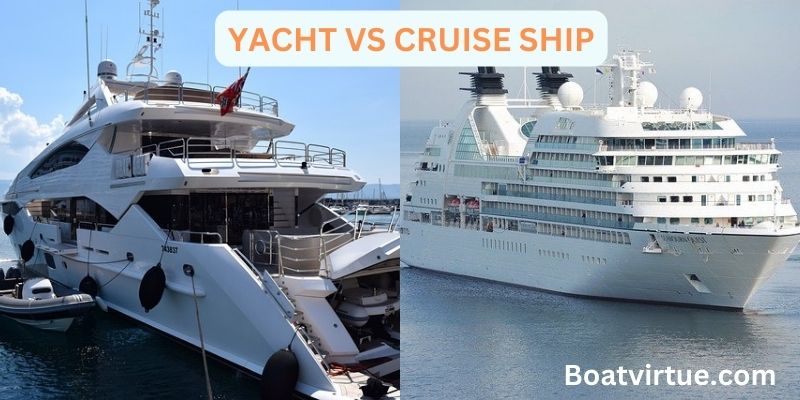
Yacht vs Cruise Ship (4 Basic Differences)
Are you wondering what the difference is between a yacht and a cruise ship? Here’s a quick rundown of the key differences between these two types of vessels.
In simple words, Yachts are smaller , privately owned vessels. Cruise ships are large, publicly owned vessels.
Yachts typically have a small crew and can accommodate a limited number of passengers. Cruise ships have a large crews and can carry thousands of passengers.
Yachts are used for pleasure cruising, racing, or chartering. Cruise ships are used for passenger transportation, vacationing, or business purposes.
Further reading the article will give you detailed answers to your queries.
Table of Contents
Yacht vs Cruise Ship
For starters, yachts are generally much smaller than cruise ships. Yachts also tend to be more luxurious, and they often have a more intimate atmosphere onboard.
Cruise ships, on the other hand, are typically large vessels that can accommodate hundreds or even thousands of passengers.
They also tend to be more budget-friendly, and they offer a wide variety of activities and amenities for guests to enjoy.
When it comes to size, yachts definitely have the upper hand. The average yacht is around 100 feet long, while the average cruise ship is roughly three times that size.
This means that yachts are much more maneuverable than cruise ships, and they can often dock in places that larger vessels simply cannot.
Yachts also tend to be more luxurious than cruise ships. They usually have fewer passengers onboard, so there is more space for each guest to enjoy.
Yachts also often have nicer staterooms and suites, and they may offer more upscale amenities like private balconies and butler service.
Cruise ships, on the other hand, are typically more budget-friendly than yachts. They can accommodate more passengers, so they can spread the cost of the voyage over a larger number of people.
Cruise ships also often have a wider variety of activities and amenities available for guests to enjoy.
When it comes to privacy, yacht vs cruise ship, there are some important considerations to take into account. First and foremost, cruises tend to be much more crowded than yachts.
This means that you’ll likely have less privacy on a cruise ship than you would on a yacht. Additionally, cruises typically offer fewer amenities and activities than yachts.
This means that you’ll likely have to spend more time in your cabin or suite on a cruise ship than you would on a yacht.
Finally, cruises typically have stricter rules and regulations than yachts. This means that you’ll need to be more mindful of your behavior and actions on a cruise ship than you would on a yacht.
The debate between yacht and cruise ship safety is one that has been around for years. Both have their pros and cons, but which one is really the safest?
Let’s start with yachts. Yachts are typically much smaller than cruise ships, so they have less surface area for waves to hit.
They also have a lower center of gravity, which makes them less likely to tip over in high winds. And because they’re not as tall, they’re less likely to be damaged by large waves.
However, yachts do have some safety concerns. They’re not as stable as cruise ships, so they can roll more easily in rough seas.
And because they’re smaller, they can be more easily capsized by large waves. Now let’s look at cruise ships.
Cruise ships are much larger than yachts, so they have more surface area for waves to hit. They also have a higher center of gravity, which makes them more likely to tip over in high winds.
And because they’re taller, they’re more likely to be damaged by large waves. However, cruise ships also have some safety concerns.
They’re not as maneuverable as yachts, so they can’t avoid waves as easily. And because they’re so big, they can take longer to stop in an emergency situation.
It all comes down to the specific situation. If you’re concerned about rolling in rough seas, then a yacht is probably the better choice.
But if you’re worried about being capsized by a large wave, then a cruise ship is probably the safer option.
Of course, the best way to stay safe on the water is to be prepared for both scenarios. Make sure you know how to swim, and always wear a life jacket.
And be sure to check the weather forecast before you set sail . That way, you can be sure to avoid any dangerous conditions.
Itinerary Flexibility & Customization
One of the key advantages that a yacht has over a cruise ship is itinerary flexibility and customization. Yacht charters offer a much more personalized vacation experience.
Allowing you to tailor your trip to suit your specific needs and interests. You can choose to explore secluded coves and anchorages, visit remote islands, or sail to popular tourist destinations.
There is no set itinerary, so you are free to go at your own pace and spend as much or as little time in each location as you wish.
Another advantage of chartering a yacht is that you can often customize the onboard experience to suit your group’s preferences.
For example, if you are interested in watersports, you can charter a yacht with equipment and staff specifically for this purpose.
Or, if you prefer a more relaxed vacation, you can charter a yacht with a spa and onboard chef. There is no need to compromise on your dream vacation when you charter a yacht.
Finally, chartering a yacht gives you the opportunity to enjoy a luxurious vacation without the crowds and hassles often associated with cruise ships.
You will have your own private vessel to enjoy, complete with everything you need for a relaxing and enjoyable trip.
Whether you are looking for an intimate getaway or a grand adventure, a charter yacht vacation is a perfect way to escape the ordinary and experience something truly unforgettable.
If you are interested in exploring the world on your own terms, a yacht charter vacation may be the perfect option for you.
With so many advantages over cruise ships, it is easy to see why this type of vacation is becoming increasingly popular.
Amazing Food & Drink
When it comes to food and drink, there are some big differences between yacht and cruise ship vacations.
On a yacht, you’ll have access to much better food and drink options, as well as the opportunity to dine in more intimate settings.
And of course, you’ll be able to enjoy the beautiful views from your yacht while you enjoy your meal. On a cruise ship, the food and drink options are more limited.
And you’ll likely be stuck eating in the buffet line with everyone else. Another big difference between yacht and cruise ship vacations is the size of the accommodations.
Yachts tend to be much smaller than cruise ships, so you’ll have a more intimate experience on board. You’ll also have more privacy on a yacht since there are fewer people on board.
And of course, you’ll be able to enjoy the beautiful views from your yacht while you relax in your cabin. On a cruise ship, the accommodations are typically larger.
So you’ll have less privacy and more noise. And of course, you’ll be stuck on a cruise ship with hundreds or even thousands of other people.
If you want a more intimate and luxurious experience, then a yacht is probably the better option. However, if you are looking for a more budget-friendly vacation with plenty of activities and amenities, then a cruise ship is probably a better choice.

Home » General » What is the Difference Between Yacht and Ship
What is the Difference Between Yacht and Ship
The main difference between yacht and ship is that a yacht is small and is mainly used for entertaining purposes, whereas a ship is bigger and is used to carry passengers and cargo .
Although both travel on water, there are considerable differences between yachts and ships.
Key Areas Covered
1. What is a Yacht – Definition, Features 2. What is a Ship – Definition, Features 3. Similarities Between Yacht and Ship – Outline of Common Features 4. Difference Between Yacht and Ship – Comparison of Key Differences
Ship, Yacht

What is a Yacht
A yacht is a sailing craft that is used for pleasure and sports. There are different types of yachts, like sailing yachts, motor-powered yachts, gullet yachts, luxury yachts, and sports yachts. The size of a yacht can be different from one another, starting from 10m long to hundreds of feet. A yacht consists of at least one cabin for the crew to sleep on board. At the same time, a yacht is large enough to have some form of sleeping quarters as well as a kitchen and a bathroom.

What is a Ship
A ship is a large watercraft that travels the world’s oceans. Ships carry passengers as well as cargo. Also, you can see ships going on defensive missions all around the world. They are very large in size, so they can carry around a ton. Generally, ships operate in oceanic areas and high seas. They consist of complex navigation systems and advanced engineering systems. Furthermore, ships have very complicated structures with advanced design aspects. These advanced machinery systems always contribute to the stability and safety of the ship. Ships have dedicated engines to boost them. At the same time, there are separate marine engineers to look after the engines of ships since they require great engineering skills.

Ships earn revenue by transporting either passengers or cargo. Thus, people use ships for commercial purposes. The whole responsibility of the ship and its cargo/passengers lies with the captain of the ship. He is the head person who has the authority to give commands as well as safeguard the vessel. The captain of a ship is a well-qualified and high-grade licensed mariner.
Similarities Between Yacht and Ship
- Both yachts and ships travel in the ocean.
- Yachts and ships carry passengers.
- These watercraft have a navigation room for operations.
- Both yachts and ships have an operator or a captain to navigate.
Difference Between Yacht and Ship
A yacht is a sailing craft that is used for pleasure and sports, while a ship is a large watercraft that travels in the world’s oceans.
Ships are larger than yachts.
Ships tend to have big crews, while most yachts don’t have big crews.
Although ships are used to carry both passengers and cargo. Yachts are used only for entertainment purposes like water sports.
Commercial Gain
Since yachts are very luxurious, there is a possibility of earning better revenue when compared to ships.
Authorized Territory
Yachts only have the authority to travel only in a certain territory where it is registered, while a ship can travel all around the world.
Hoisting Flags
Although it is a requirement for yachts to hoist the flags of the country of their registration, hoisting the flags of their countries is not a requirement for ships.
The main difference between yacht and ship is that a yacht is smaller than a ship. In addition, yachts are mainly used for entertaining purposes, whereas ships are used to carry passengers and cargo.
1. “ Ship .” Wikipedia. Wikipedia Foundation.
Image Courtesy:
1. “ Yacht O’Mega ” By Jörg Fuhrmann – Own work (CC BY-SA 4.0) via Commons Wikimedia 2. “ Colombo.Express.wmt ” By Wmeinhart – Foto wurde mit einem Panoramaprogramm aus drei Fotos zusammengesetzt (CC BY-SA 3.0) via Commons Wikimedia
About the Author: Gerandielle
you may also like these, leave a reply cancel reply.

What’s the Difference Between a Ship and a Boat?
When it comes to talking about watercraft, the terms “ship” and “boat” are often used interchangeably.

However, there are differences between the two that are worth exploring. Understanding these differences can help clarify what type of vessel is being referred to and what its capabilities may be.
Defining the terms is a good starting point. Generally, a ship is a larger vessel that is used for commercial or military purposes.
It typically has a displacement hull, which means that it moves through the water by pushing it aside as it goes.
A boat, on the other hand, is a smaller vessel that can be used for a variety of purposes, including recreation, transportation, and fishing.
Boats can have either displacement or planing hulls, which means that they use the water’s surface tension to lift themselves out of the water and move more quickly.
Table of Contents
Key Takeaways
- Ships and boats are not the same thing and have distinct differences in their design and construction.
- The terms “ship” and “boat” are often used interchangeably, but a ship is typically larger and used for commercial or military purposes while a boat is smaller and used for a variety of purposes.
- Understanding the differences between ships and boats can help clarify what type of vessel is being referred to and what its capabilities may be.
Boat vs Ship

Defining the terms “ship” and “boat” has been a topic of debate for centuries. The English language has evolved over time, and so have the definitions of these terms.
While the two words are often used interchangeably, there are some key differences between them.
Dictionary Definitions
According to the Merriam-Webster dictionary, a ship is defined as “a large seagoing vessel.” On the other hand, a boat is defined as “a small vessel for travel on water.”
The Oxford English Dictionary defines a ship as “a large seagoing vessel,” while a boat is “a small vessel for use on water.”
Key Differences
The main difference between a ship and a boat is their size. A ship is typically larger than a boat and can carry more cargo and passengers.
Ships are also designed for longer journeys and can travel across oceans .
Boats, on the other hand, are smaller and are generally used for shorter trips, such as fishing or pleasure boating.
Another key difference between the two is their purpose. Ships are designed for commercial or military purposes, while boats are used for recreational or personal use.
Ships are often used for transporting goods, while boats are used for activities such as fishing, water sports, and leisurely cruising.
In conclusion, while the terms “ship” and “boat” are often used interchangeably, there are distinct differences between the two.
Ships are larger vessels designed for longer journeys and commercial or military purposes, while boats are smaller vessels used for recreational or personal use.
Understanding the differences between these two terms can help clarify communication in maritime contexts.
Design and Construction

When it comes to the design and construction of vessels, there are some key differences between ships and boats.
In general, ships are larger and more complex than boats, and they require more sophisticated engineering and technology to design and build.
Ship Design and Construction
Ships are designed and constructed to be able to withstand the harsh conditions of the open sea .
This means that they need to be stable and able to handle large waves and high winds.
To achieve this stability, ships are designed with a low center of gravity and a wide beam.
In terms of construction, ships are typically built using steel or other strong materials that can withstand the stresses of the open sea.
They also require a significant amount of engineering and technology to design and build, including advanced computer modeling and simulation tools.
Boat Design and Construction
Boats, on the other hand, are generally smaller and less complex than ships. They are often used for recreational purposes, such as fishing or pleasure cruising, and they are designed and constructed to be more nimble and maneuverable than ships.
In terms of design, boats can vary widely depending on their intended use. Some boats are designed for speed and maneuverability, while others are designed for stability and comfort.
They can be made from a variety of materials, including wood, fiberglass, and aluminum.
Boats are typically less expensive and easier to build than ships, but they still require a certain level of engineering and technology to design and construct.
They need to be stable and safe, and they must be able to handle the conditions of the water they will be used in.
Size and Capacity

Ships are large vessels designed to navigate deep waters and transport cargo or passengers over long distances.
Their size and capacity vary depending on their intended use. The cargo capacity of a ship is determined by its size, which is measured in gross tonnage (GT) or deadweight tonnage (DWT).
The GT is the total volume of all enclosed spaces on a ship, while the DWT is the weight of cargo, fuel, water, and stores that a ship can carry.
Large cargo ships can have a capacity of over 20,000 TEUs (twenty-foot equivalent units), which is equivalent to 20,000 twenty-foot containers.
These ships can be over 400 meters long and 59 meters wide. They are used to transport goods such as oil, chemicals, and other bulk cargo.
Container ships are the most common type of cargo ship and have a standardized design to accommodate shipping containers.
Passenger ships, on the other hand, are designed to transport people and have a capacity ranging from a few hundred to several thousand passengers.
Cruise ships are the largest passenger ships and can have a capacity of over 6,000 passengers.
Boat Size and Capacity
Boats are smaller vessels designed for use in shallow waters and for short-distance transportation.
They come in various sizes and shapes, ranging from small rowboats to large yachts. The capacity of a boat is determined by its size and weight-carrying capacity.
Small boats, such as dinghies and canoes, have a capacity of a few people and are used for recreational purposes.
Larger boats, such as motorboats and sailboats, can have a capacity of up to 15 people and are used for fishing, water sports, and short-distance transportation.
Types and Purposes

Ships are large seafaring vessels that are designed for a variety of purposes. The following are some of the most common types of ships:
- Cargo Ships: These are vessels that are designed to transport goods and cargo across the sea. They may carry a variety of goods, including raw materials, finished products, and consumer goods.
- Naval Ships: These are vessels that are designed for military purposes, such as protecting a country’s coastline or engaging in warfare. They may include warships, submarines, and other types of vessels.
- Passenger Ships: These are vessels that are designed to transport people across the sea. They may include cruise ships, ferries, and other types of vessels.
Types of Boats
Boats are smaller vessels that are designed for a variety of purposes. The following are some of the most common types of boats:
- Fishing Boats: These are vessels that are designed for fishing purposes. They may include commercial fishing boats or recreational fishing boats.
- Lifeboats: These are small boats that are designed to provide a means of escape in case of an emergency on a larger vessel.
- Kayaks and Canoes: These are small, lightweight boats that are designed for recreational purposes, such as kayaking or canoeing.
- Sailboats: These are boats that are powered by the wind. They may include racing sailboats or recreational sailboats.
- Motorboats: These are boats that are powered by an engine. They may include speedboats, yachts, and other types of vessels.
Ships and boats are designed for a variety of purposes, including recreational and commercial purposes.
Recreational purposes may include activities such as fishing, sailing, and cruising.
Commercial purposes may include transporting goods and cargo across the sea, as well as military purposes.
Cargo ships are designed to transport goods and cargo across the sea.
They may include container ships, which are designed to transport large containers of goods, or bulk carriers, which are designed to transport large quantities of bulk materials such as coal or grain.
Naval ships are designed for military purposes, such as protecting a country’s coastline or engaging in warfare.
They may include warships, submarines, and other types of vessels.
Passenger ships are designed to transport people across the sea. They may include cruise ships, ferries, and other types of vessels.
Fishing boats are designed for fishing purposes, either for commercial or recreational purposes.
Lifeboats are designed to provide a means of escape in case of an emergency on a larger vessel.
Kayaks and canoes are small, lightweight boats that are designed for recreational purposes, such as kayaking or canoeing.
Sailboats are powered by the wind, while motorboats are powered by an engine.
Operational Areas

When it comes to operational areas, both ships and boats can operate in a variety of environments, including oceans, inland waterways, rivers, lakes, and other bodies of water.
However, there are some key differences in the specific operational areas that are best suited for each type of vessel.
Ships Operational Areas
Ships are typically designed for deep water and oceangoing operations. These vessels are often larger and more powerful than boats, making them better suited for long-distance travel and heavy cargo transport.
Ships are commonly used for international trade and commerce, as well as for military operations and scientific research.
In addition to oceanic operations, ships can also operate in coastal areas, where they can transport goods and people between ports.
Some ships are designed to operate in specific environments, such as icebreakers that are used to navigate through frozen waters.
Boats Operational Areas
Boats, on the other hand, are better suited for inland waterways, such as rivers, lakes, and other bodies of water.
These vessels are often smaller and more maneuverable than ships, making them ideal for recreational activities like fishing, water sports, and sightseeing.
Boats can also be used for commercial purposes, such as transporting goods and people along inland waterways.
Coastal areas can also be navigated by boats, but they are typically limited to nearshore operations due to their smaller size and lower power.
Propulsion and Navigation

Ships are large vessels designed for long-distance travel across oceans and seas.
They are equipped with powerful engines that provide propulsion and enable them to move through water. The engines are typically powered by diesel or gas turbines.
Ships also have advanced navigation systems that make it possible for them to travel safely across vast distances.
Ship propulsion systems are designed to provide the necessary thrust to move the vessel through water.
The engines are typically connected to propellers that are located at the stern of the ship .
The propellers are designed to convert the rotational energy of the engines into forward motion, propelling the ship through the water.
Navigation systems on ships are designed to provide accurate information about the ship’s location, speed, and direction.
This information is critical for safe navigation, especially in areas where there are hazards such as rocks, reefs, or shallow waters.
Navigation systems on ships typically include radar, GPS, and other advanced technologies.
Boat Propulsion and Navigation
Boats are smaller vessels designed for use on lakes, rivers, and other bodies of water.
They can be powered by a variety of different propulsion systems, including sail, motor, and paddle.
Boats are typically designed for shorter distances and are not equipped with the same advanced navigation systems as ships.
Boat propulsion systems are designed to provide the necessary thrust to move the vessel through water.
The propulsion systems can be powered by motors, sails, or paddles. Motor-powered boats are the most common and are typically powered by gasoline or diesel engines.
Sail-powered boats use the wind to provide propulsion, while paddle-powered boats are propelled by human power.
Navigation systems on boats are typically simpler than those on ships. They may include basic navigation tools such as compasses, maps, and charts.
Boats may also be equipped with GPS systems, but these are less common than on ships. Navigation on boats is typically done by visual landmarks and nautical charts.
Crew and Command

The crew of a ship is typically larger than that of a boat and can range from a few dozen to several hundred people depending on the size of the vessel.
The captain is in charge of the ship and its crew, and is responsible for ensuring the safety of the ship and its passengers.
The captain is also responsible for navigating the ship and making decisions about its course.
In the US Navy and Royal Navy, the captain of a ship is referred to as the “commanding officer” or “CO”.
The CO is responsible for the overall mission of the ship and its crew, and is held accountable for any successes or failures.
The crew of a ship is organized into different departments, such as engineering, navigation, and communications.
Each department has its own leader, such as a chief engineer or chief mate, who reports to the captain.
Boat Crew and Command
The crew of a boat is typically smaller than that of a ship and can range from a few people to a dozen or so.
The captain of a boat is responsible for navigating the vessel and making decisions about its course.
In general, boats are less complex than ships and require less specialized knowledge to operate.
As a result, the crew of a boat is often less formalized and more flexible than that of a ship.
The captain of a boat is often responsible for multiple tasks, such as handling the sails, steering the boat, and managing the crew.
In some cases, the captain may also be responsible for cooking and other domestic tasks.
Historical Evolution

Ships have been an integral part of human civilization for thousands of years. The history of ships dates back to ancient times when people used rafts made of logs to cross water bodies.
As technology advanced, so did the design and construction of ships. The first sailing ships were developed by the ancient Egyptians and Phoenicians, and they used them for trade and commerce.
The clipper ships, which were developed in the 19th century, were some of the fastest sailing ships ever built.
These ships were used for transportation of goods and people across the oceans.
History of Boats
Boats have been in use for transportation, fishing, and leisure activities for thousands of years.
The first boats were made of animal skins and reeds and were used by early humans for fishing and transportation.
As civilization advanced, boat design and construction also evolved.
Canoes and kayaks were developed by indigenous people around the world for hunting and transportation in rivers and lakes.
These boats were made of wood, animal hides, and other materials.
In modern times, boats are used for a variety of purposes, including transportation, recreation, and military purposes.
The design and construction of boats have also evolved, with the use of new materials such as fiberglass and aluminum.
Today, boats come in all shapes and sizes, from small dinghies to large cruise ships.
Frequently Asked Questions
Is a submarine considered a boat or a ship.
A submarine is classified as a boat, not a ship. This is because submarines are typically smaller in size and are designed to operate underwater.
What is the difference between a ship and a sailboat?
A ship is a large vessel that is designed to transport people or cargo across bodies of water, while a sailboat is a smaller vessel that uses wind power to move across the water.
When does a boat become a yacht?
There is no clear distinction between a boat and a yacht. Generally, a yacht is considered a luxury vessel that is used for pleasure cruising and is larger and more expensive than a typical boat.
What are the different types of ships and boats?
There are many different types of ships and boats, each designed for a specific purpose. Some common types of ships include cargo ships, cruise ships, and naval ships.
Common types of boats include fishing boats, speedboats, and sailboats.
Why are submarines called boats and not ships?
Submarines are called boats because they were originally designed as underwater vessels for military use.
In the early days of submarines, the term “boat” was used to describe any vessel that operated underwater, regardless of its size or purpose.
Is a ferry classified as a boat or a ship?
A ferry is typically classified as a boat. Ferries are designed to transport people and vehicles across bodies of water and are often used for public transportation.
However, some larger ferries may be classified as ships due to their size and capacity.
Add comment
Cancel reply.
Save my name, email, and website in this browser for the next time I comment.
You may also like

What’s the Difference Between Port and Starboard?

Biggest Ship in the World
Latest articles.
- What’s the Difference Between Seaweed and Seagrass?
- Hilarious Video Shows How Dolphins Use Pufferfish to Get High!
- The Tallest Bridge Ever Built: A Marvel of Modern Engineering
- Are There Sharks in the North Sea?
- The Largest Lake in the World Isn’t What You Think
- Are There Sharks in Lake Washington?
About American Oceans
The American Oceans Campaign is dedicated primarily to the restoration, protection, and preservation of the health and vitality of coastal waters, estuaries, bays, wetlands, and oceans. Have a question? Contact us today.
Explore Marine Life
- Cephalopods
- Invertebrates
- Marine Mammals
- Sea Turtles & Reptiles
- Sharks & Rays
- Shellfish & Crustaceans
Copyright © 2024. Privacy Policy . Terms & Conditions . American Oceans
- Ocean Facts
What’s the Difference Between a Boat and a Ship?
By matt soniak | jan 22, 2013.
The Supreme Court ruled last week in the case of Fane Lozman vs the City of Riviera Beach, Florida . They decided that Lozman’s 60-foot, two-story, motorless, rudderless floating home was not a boat or a vessel, and hence should not have been seized under maritime law and destroyed by the city.
With the line between house and boat a little bit clearer, reader Steve asked us to clarify something else: “What defines a boat , versus a ship ?”
One of the quickest ways to reveal yourself as a landlubber is to refer to a ship as a boat, but there’s no absolute distinction between the two, and even experienced mariners rely on local custom and usage to differentiate them.
Back in the Age of Sail , a ship was pretty well defined as a vessel with three or more square rigged masts. As different methods of power generation replaced wind and sail, the ships of old became more specifically known as “sailing ships,” and the usage of ship broadened to cover a wide, ill-defined variety of vessels.
One thing that sets a ship apart from a boat is size. According the U.S. Naval Institute, a boat, generally speaking, is small enough to be carried aboard a larger vessel, and a vessel large enough to carry a smaller one is a ship. Or, as Steve says his Navy Lieutenant father put it to him, “You can put a boat on a ship, but you can’t put a ship on a boat.”
Now, this Naval convention is a good rule of thumb most of the time, but there are a few exceptions, among both naval and civilian vessels. Some yachts, ferries, tug boats, fishing boats, police boats, etc. can carry small lifeboats or dinghies, but they usually don’t graduate to ship status because of that. On the other hand, a large container ship or the USS Cole can be carried aboard an even bigger ship without getting demoted to a boat.
The U.S. Navy seems to want to have it both ways with their submarines. One component of each vessel’s official name is USS — that is, United States Ship —but seamen, the Naval Institute says, usually refer to submarines in general as boats, regardless of size.
Another factor the Naval Institute considers is the vessel’s crew, command, and use. If it has a permanent crew with a commanding officer, it’s usually a ship. If it’s only crewed when actually in use and has no official CO, then you’re probably dealing with a boat. Ships are also usually intended and designed for deep-water use and are able to operate independently for long periods of time. Boats, meanwhile, lack the fuel and cargo capacity for extended, unassisted operation.
Again, though, there are some exceptions in actual usage. Most commercial fishing vessels, for example, are large and can go out alone on the open ocean for weeks at a time. They’re almost always called boats, though, and rarely “fishing ships.”
Without any hard and fast rules about boats and ships, we humbly suggest another loose guideline that will ingratiate you to the captain of any sort of vessel: Call it whatever the skipper wants you to call it.
- Organizations
- Planning & Activities
- Product & Services
- Structure & Systems
- Career & Education
- Entertainment
- Fashion & Beauty
- Political Institutions
- SmartPhones
- Protocols & Formats
- Communication
- Web Applications
- Household Equipments
- Career and Certifications
- Diet & Fitness
- Mathematics & Statistics
- Processed Foods
- Vegetables & Fruits
Difference Between Yacht and Boat
• Categorized under Objects | Difference Between Yacht and Boat

English is a language that is choc full of words. In fact, English has one of the largest vocabularies of any of the world’s languages. While this makes it a rich and fascinating language, it can also make learning English somewhat confusing.
Take for instance the amount of vocabulary that we have to differentiate between marine vessels. What exactly is the difference between a yacht and a boat?
English speakers generally use the word boat to refer to a sea vessel that is reasonably small and not luxurious. The term can refer to a vessel that is motorized or not motorized and either used for work, such as in the case of a fisherman or water police, or for recreational purposes such as weekend fishing or relaxing.
A boat can either be a dinghy, row boat, fishing boat, or sailing boat and they can be quite large, but are usually more practical than luxurious.
A yacht is normally a larger and much more luxurious sea vessel than a boat. Tell the owner of a yacht that they have a boat and they are likely to take offense. Yachts are not generally used for commercial purposes, but are luxury recreational vessels. They can either be sailing yachts or power boat yachts.
There are a couple of different styles of yacht that can be differentiated: a regular yacht starts at about 34 feet, a mega yacht is more than 100 feet and a super yacht is any yacht that is longer than 200 feet.
A ship is a very large sea vessel that is generally used for commercial purposes such as shipping cargo between ports around the world or a cruise ship or passenger ship for transporting people.
There is a lot of different vocabulary used to describe different types of sea going vessels, but if you understand the essential differences between a boat, ship and yacht then you are unlikely to make many errors. Boat tends to be a broader term for sea vessels than yachts, which are more specifically used as a luxury pastime.
Summary: 1.Boats can be used for commercial or recreational purposes 2.Yachts are generally only recreational 3.Boats are generally small 4.Yachts can be any size up to more than 200 feet long 5.Ships are large sea vessels used for commercial purposes 6.Boats and yachts can either be motorized or not motorized
- Recent Posts
- Difference Between Governor and Senator - November 14, 2009
- Difference Between Immigration and Migration - November 14, 2009
- Difference Between Who and Whom - November 13, 2009
Sharing is caring!
Search DifferenceBetween.net :
- Difference Between Boats and Ships
- Difference Between Port and Harbor
- Difference Between Aluminum and Fiberglass Boats
- Difference Between MPH and Knot
- Difference Between Inboard and Outboard Motors
Cite APA 7 , R. (2009, November 3). Difference Between Yacht and Boat. Difference Between Similar Terms and Objects. http://www.differencebetween.net/object/difference-between-yacht-and-boat/. MLA 8 , Rachel. "Difference Between Yacht and Boat." Difference Between Similar Terms and Objects, 3 November, 2009, http://www.differencebetween.net/object/difference-between-yacht-and-boat/.
US Coast Guard conciders a vessel over 26′ with a cabin to be a yacht.
All Boats for privat sporting are named “YACHT”. For me is a Yacht a sportboat with a closed cabin on board. per exemple : A safeboat on a liner is more long than 34 Feet but it is always a “BOAT” because its a public and commercial thing. A “Yacht” is a privat and luxury sportboat for a privat person !
Leave a Response
Name ( required )
Email ( required )
Please note: comment moderation is enabled and may delay your comment. There is no need to resubmit your comment.
Notify me of followup comments via e-mail
Written by : Rachel. and updated on 2009, November 3 Articles on DifferenceBetween.net are general information, and are not intended to substitute for professional advice. The information is "AS IS", "WITH ALL FAULTS". User assumes all risk of use, damage, or injury. You agree that we have no liability for any damages.
Advertisments
More in 'objects'.
- Difference Between Cow Milk And Goat Milk
- Difference Between CPAP and BIPAP
- Difference Between Sunscreen and Sunblock
- Difference Between Hiroshima Atomic Bomb and Nagasaki Atomic Bomb
- Difference Between Latte and Mocha
Top Difference Betweens
Get new comparisons in your inbox:, most emailed comparisons, editor's picks.
- Difference Between MAC and IP Address
- Difference Between Platinum and White Gold
- Difference Between Civil and Criminal Law
- Difference Between GRE and GMAT
- Difference Between Immigrants and Refugees
- Difference Between DNS and DHCP
- Difference Between Computer Engineering and Computer Science
- Difference Between Men and Women
- Difference Between Book value and Market value
- Difference Between Red and White wine
- Difference Between Depreciation and Amortization
- Difference Between Bank and Credit Union
- Difference Between White Eggs and Brown Eggs
What's the difference between a 'boat' and a 'ship'?
All dictionaries try to avoid the dread lexicographic condition known as circular defining . This is when one looks up a word such as dictionary , sees that it is defined as “a lexicon ,” and, when looking up lexicon , finds that it is defined as “a dictionary.” Given that we spend a considerable amount of time avoiding this sort of defining, it may come to a surprise to some users to discover that one of the definitions for boat is “ship,” and vice versa.
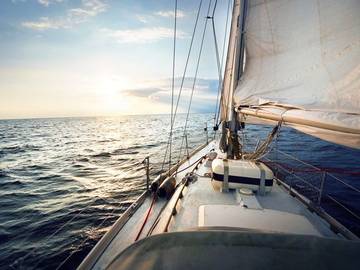
Take to the sea.
This is not actually a case of circular defining, as these seeming examples of synonymy are but one of a number of possible meanings for each word. And we do not define the words in this manner out of a desire to annoy people who love to observe the distinction between these two kinds of vessels. The reason we offer the definitions of “ship” for boat and “boat” for ship is that this is the manner in which a large number of people use the words.
‘What is the difference between a ship and a boat?’ has a good number of answers, but unfortunately most of these are not couched in the type of precise language a dictionary aims for. Sample responses to this question include ‘You can put a boat onto a ship, but you can’t put a ship onto a boat,’ ‘a boat is what you get into when the ship sinks,’ and ‘a boat is the thing you put gravy in.’
If you were to look for precision by asking this question of ten nautically-inclined people in ten different areas it is possible that you would get a wide range of answers, for the exact moment at which a boat becomes a ship varies considerably. We define ship in the following ways: “a large seagoing vessel,” “a sailing vessel having a bowsprit and usually three masts each composed of a lower mast, a topmast, and a topgallant mast,” and “boat (especially one propelled by power or sail)”. Boat has a slightly narrower semantic range, including “a small vessel for travel on water,” and “ship.”
Usage writers appear to have been warning people about these words since the late 19th century; boat appears on James Gordon Bennett’s “Don’t List” in the New York Herald , with instruction to avoid “except in describing a small craft propelled by oars.” However, the distinction between boat and ship had been observed by others well before this.
Mr. Barnes then proceeded to state the distinction between a boat and a ship, and contended that all vessels above a certain tonnage, and which were registered, came under the denomination of “ships,” inasmuch as boats had no register. — The Essex County Standard (Colchester, Eng.), 29 Oct. 1841 ”What do you think, William, is the next gradation?” ”Why, father, is there any thing between a boat and a ship?” ”We are not come to a ship yet, William; we have only spoken of such sorts of vessels as are moved by paddles or oars.” — Isaac Taylor, The Ship, or Sketches of the Vessels of Various Countries , 1834
Despite the fact that we’ve been receiving admonitions about boat and ship for over a century now, many people cheerfully insist on using boat for waterborne vessels of any size. However, few, if any, use ship to refer to small crafts. If you find that you are unable to remember the which is the larger between ship and boat it may help to sing the children’s song Row Your Boat (“row, row, row your ship ” sounds decidedly odd — small oared crafts are almost always referred to as boats ). No matter how many aphorisms we come up with, it seems unlikely that we are going to get much more specific than 'ships are bigger than boats.'
Considering that our language has hundreds of words for different kinds of things that float on the water it is somewhat odd that we should focus exclusively on the difference between only these two. Should you find yourself beset by an angry sailor who calls you out for using boat when you should have used ship you may turn and ask if they know the difference between a xebec and an umiak , a corvette and a wherry , or an argosy and a garvey (the first ones are all ships and the second ones all boats).
The fact that English usage is messy, and has contributed to a use of boat that is somewhat vague, does not mean that there aren't settings where precision is called for. For instance, when you are sailing on someone else's vessel it is polite to always employ the correct terminology. And if you find yourself at a loss about when a boat becomes a ship you should contact your local maritime authority.
Word of the Day
See Definitions and Examples »
Get Word of the Day daily email!
Games & Quizzes

Commonly Confused
'canceled' or 'cancelled', 'virus' vs. 'bacteria', your vs. you're: how to use them correctly, is it 'jail' or 'prison', 'deduction' vs. 'induction' vs. 'abduction', grammar & usage, words commonly mispronounced, more commonly misspelled words, is 'irregardless' a real word, 8 grammar terms you used to know, but forgot, homophones, homographs, and homonyms, great big list of beautiful and useless words, vol. 3, even more words that sound like insults but aren't, the words of the week - mar. 1, 'blue moon,' 'wolf moon,' and other moons to look for throughout the year.

8 Differences Between Yacht and Cruise Ship
When most people think of a yacht, they picture a large, luxurious vessel, usually used for pleasure cruises or racing. However, there are many different types and sizes of yachts, and they can be used for a variety of purposes.
Cruise ships, on the other hand, are much larger than yachts and are designed specifically for carrying passengers on vacation cruises. Before going for the difference between yacht and cruise ship, let’s see what they are:
What Is Yacht Ship?
A yacht is a vessel used for pleasure trips, cruising, or racing. It can be either motorized or sailed and is designed for recreational use. A yacht is generally larger than a powerboat and has a cabin and one or more bathrooms.
Yachts can range in size from 20 feet (6.1 m) to over 200 feet (61 m). The term mega yacht typically refers to yachts over 80 feet (24 m). Some yachts are used exclusively for charter, while others are privately owned and used for both chartering and personal use.
Yacht ship is a term that is sometimes used to refer to a very large yacht, but it is not an official designation.
Types of Yacht Ship
A yacht is a vessel used for recreation or pleasure, typically propelled by sailing or motor power and used for cruising or racing. There are many different types of yachts, from small sailing boats to large luxury motor yachts. Here is a look at some of the different types of yachts:
- Sailing Yachts: Sailing yachts are vessels that are propelled by wind power. These yachts typically have one or more masts and sails. They range in size from small racing boats to large cruising yachts.
- Motor Yachts : Motor yachts are vessels that are propelled by motor power, typically diesel engines. These yachts can range in size from small pleasure boats to large luxury yachts.
- Catamarans: Catamarans are two-hulled vessels, typically with two parallel hulls of equal size. These vessels are stable and efficient and are popular for both pleasure cruising and racing.
- Trimarans: Trimarans are three-hulled vessels, typically with two smaller hulls flanking a larger central hull. These vessels are stable and efficient and are also popular for both pleasure cruising and racing.
- Luxury Yachts: Luxury yachts are motor yachts that are typically larger than 80 feet in length and have a host of high-end amenities, such as multiple staterooms, a spacious saloon, and a flybridge. These yachts are designed for ultimate luxury and comfort.
What Is a Cruise Ship?
A cruise ship is a large, ocean-going vessel designed for carrying passengers on extended voyages, typically of several weeks’ duration or longer, and for providing them with amenities and activities comparable to those found at resorts or hotels on land.
Most cruise ships are owned by large corporations and are operated as part of a vacation package sold by a cruise line. They carry thousands of passengers and crew members and are some of the largest ships in the world.
Types of Cruise Ship
Cruise ships come in all shapes and sizes, from small and intimate vessels to large and lavish ones. There are many different types of cruise ships, each with its own unique features and amenities. Here is a look at some of the most popular types of cruise ships:
- Mega Ships: These are the largest and most lavish cruise ships in the world. They boast an array of features and amenities, including multiple restaurants, bars, pools, casinos, spas, and more.
- Luxury Ships: Luxury cruise ships offer a more upscale experience, with smaller passenger capacities and a higher ratio of crew to passengers. These ships typically have fewer public areas and focus more on providing a relaxing and intimate experience
- Family Ships: Family cruise ships are designed to provide a fun and safe environment for families with children. These ships usually have a wide variety of kid-friendly activities, as well as childcare services.
- Adventure Ships: Adventure cruise ships are designed for passengers who want to get up close and personal with nature. These ships typically sail to remote and exotic destinations and offer a wide range of activities such as hiking, biking, kayaking, and more.
- River Ships: River cruise ships are smaller vessels that sail on rivers and canals. These ships offer a more intimate experience, with a smaller passenger capacity and a lower ratio of crew to passengers. River cruise ships often have fewer public areas and focus more on providing a relaxing and intimate experience.
Difference Between Yacht and Cruise Ship
1. size.
When it comes to size, there is a big difference between a yacht and a cruise ship. A yacht is a small, private vessel used for pleasure or sport, while a cruise ship is a large vessel used for carrying passengers on long voyages.
Both types of vessels have their own unique features and amenities, but the size difference is the most notable.
A typical yacht is between 30 and 100 feet long, with most falling in the 40-60-foot range. Yachts are much narrower than cruise ships, with a beam (width) of only about 12-15 feet.
2. Engine
Yacht engines are typically located in the back of the vessel, while cruise ship engines are typically located in the front. This is because yachts need to have a low center of gravity for speed and maneuverability, while cruise ships need to have a high center of gravity for stability.
Yacht engines typically have a higher power-to-weight ratio than cruise ship engines. This is because yachts need more power to achieve high speeds, while cruise ships need more stability and, therefore, can afford to have a heavier engine.
3. Passenger Capacity
Cruise ships definitely have the upper hand. The largest of these vessels can carry over 5,000 passengers, while even the biggest yachts only have room for around 100 guests.
You’ll find everything from casinos and nightclubs to multiple restaurants and swimming pools on a cruise ship, while most yachts only have a few basic amenities.
4. Crew
The type of work that is expected of the crew also differs between yachts and cruise ships. On a yacht, the crew is responsible for everything from cooking and cleaning to maintenance and repairs.
They also have to be prepared to deal with any emergencies that may arise. On a cruise ship, the crew is responsible for providing entertainment and activities for the passengers, as well as keeping the ship clean.
5. Ports of Call
Cruise ships are much larger than yachts, so they can visit a wider range of ports. This means that you will have more options for shore excursions and activities. However, it also means that you will be spending more time on the ship than you would on a yacht.
Yachts are smaller and more intimate, so they can visit more remote and exclusive ports. This means that you will have a more personalized experience, but you will also have fewer options for things to do.
6. Cabins & Activities
When it comes to cabins, yacht cabins are typically smaller than cruise ship cabins. However, they are also more luxurious, with higher-end finishes and amenities. Yacht cabins often have a more modern design than cruise ship cabins, which tend to be more traditional. Yacht cabins also have a higher price tag than cruise ship cabins.
When it comes to activities, both yacht and cruise ships offer a variety of options. However, yachts tend to focus more on luxury and leisure, while cruise ships offer a wider range of activities, including educational programming, live entertainment, and casino gaming.
7. Dining
On a yacht, you will typically have the option to dine in the main dining room, or you can choose to have your meals delivered to your stateroom. There is also the option to dine on the deck, weather permitting. The food on a yacht is usually of a higher quality than that on a cruise ship, as the chefs can use fresher and more expensive ingredients.
On a cruise ship, there are typically more dining options available, including buffet-style and formal sit-down restaurants. The food on a cruise ship is usually of a lower quality than that on a yacht, as the chefs have to cook for a larger number of people and often use frozen or canned ingredients.
8. Cost
Yacht tickets are generally much more expensive than cruise ship tickets due to the smaller capacity and higher demand. However, travelers should keep in mind that the overall cost of a yacht vacation will likely be lower than the cost of a cruise ship vacation since yachts typically include all meals and activities in the ticket price.
Yachts typically have a smaller number of staterooms than cruise ships, which means that they fill up more quickly and are often more expensive to book.
However, travelers should keep in mind that yacht staterooms are often more luxurious than cruise ship staterooms, so the overall cost may be worth it for those looking for a truly luxurious vacation experience.
Final Words
I hope you found this article helpful in understanding the difference between yacht and cruise ships. If you have any further questions, please don’t hesitate to ask.
Saiful Emon is the founder and editor of Sun Sea Skis , a sailing blog for adventure seekers. He loves sailing, traveling, and sharing his experiences with others. He also writes about fitness, wellness, business, and marketing in his spare time!
What Is a Cruising Sailboat? Everything You Need to Know
Sailing must haves for your next adventure, leave a comment cancel reply.
Save my name, email, and website in this browser for the next time I comment.

- Marine Engineering
- Yacht Services
- Yacht Surveys
- Yacht Electrician
- Megger Testing
- Marina Electrical Services
- Industrial Electrical
- Commercial Electrical
- Residential Building Electrical
- LED Lighting
- Industrial Lighting
- Electric Vehicle Charging Stations
- Sales & Parts
- Service Request
- Sales Request

- Privacy Policy
- Terms & Conditions
- RH Marine Group
What’s the Difference Between a Yacht and a Boat?
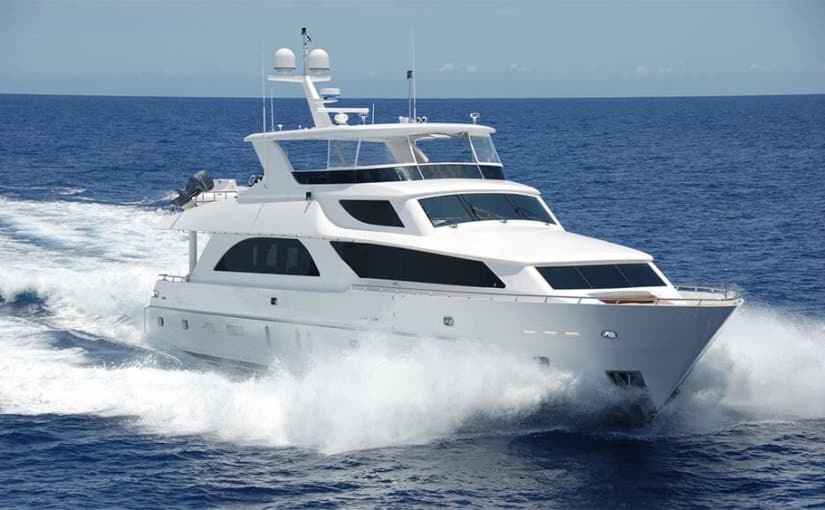
Many boating enthusiasts use the words boat and yacht interchangeably when in reality, they are very different terms. A yacht is a larger, recreational boat or ship. The word “Yacht” comes from Dutch origin and was originally defined as a light, and fast sailing vessel used by the Dutch navy to find and capture pirates. A boat, on the other hand, is smaller in size and can be anything from a fisherman’s boat to a sailboat.
When determining the difference between a yacht and a boat , there are a few main deciding factors including:
Size As previously mentioned, size matters when it comes to differentiating between a boat and a yacht. Yachts can range from about 35 feet in length all the way up to 160+ feet in length, however, most will be somewhere in the middle. Anything over 160 feet would be considered a “Superyacht”. Boats are generally anywhere from 15-30 feet in length.
Where they can operate Smaller boats are usually capable of operating in calm waters like lakes, rivers, and shallow harbors. Some larger boats, usually 20 – 30 feet in length, can also navigate more rough ocean waters. A yacht, on the other hand, is able to sail in deeper, ocean waters and deal with more turbulent seas. Due to a larger size, high tech yacht electronics and guidance instruments, protection from the elements, and a number of other features yachts are far more suitable for longer ocean trips.
Crew While a boat can be operated by just one captain, a yacht typically requires a full crew to help with navigation, maintenance, electronics and engineering, repairs and stewards to cater to the passengers. In reality, it’s a lot more like a small, private cruise service than an afternoon on the boat with your friends.
Propulsion Depending on the boat, it may operate solely using a sail and the wind, or one or more inboard or outboard motors. While some larger boats can mount very large engines to create some real speed on the water, these engines do not match the power of most yacht engines. Yacht engines are much larger in size, can produce considerably more power – in some cases up to 800hp, and are capable of running much longer distances.
Navigation and technology While some boats may have advanced marine electronics and navigation systems, it’s more of a requirement when it comes to yachts. When making trans oceanic trips it is not only important that you are able to navigate with precision, but also that you can detect other boats or objects that you may not be able to see and understand the performance of your vessel.
Tess Electric is a leading provider of marine electronics, marine electrical services , and marine engineering services to owners and crews of yachts and superyachts in Fort Lauderdale, FL. If you’re looking to work with an experienced team of marine electrical contractors, contact us today.
Recent Posts
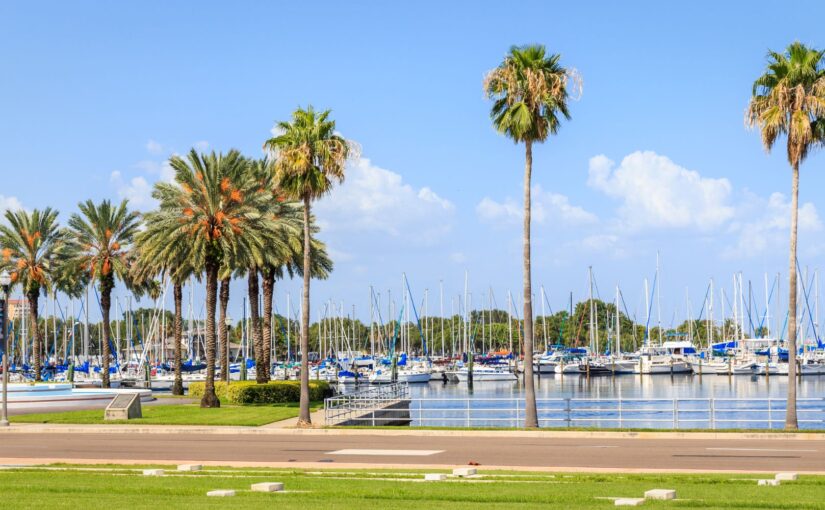
We are a Marine Electrical Service Company servicing mostly in the Large Mega Yacht Industry and Marine Land Installations (marinas, resorts, apartments, docks, etc). We have mobile Technicians who cover the tri county area (Broward, Palm Beach and Dade) in their fleet of vehicles.

- Marine Electrical
- Land Division
- ShipServ Ship Supply
Our Services
- Fluorescent To LED Conversion
- All Land Services
- All Marine Services
Sales & Support
- Sales Request Form
Our Location
Tess Electrical LLC
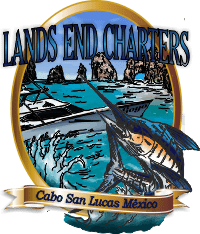
LANDS END CHARTERS 1-800-281-5778
- Photo Gallery
Yacht vs Cruise Ship: Key Differences Explained
- November 1, 2023
Many travelers look at luxury yacht rentals and cruise ships when planning a vacation at sea. But there are some major distinctions between these two options. Understanding the key differences can help you choose the best one to suit your needs and expectations.
Size and Capacity
The most obvious difference is size and guest capacity. Cruise ships are massive, housing 2000-6000 passengers.
Even small ships carry 600+ people. In contrast, chartered yachts max out around 12 guests, with typical capacities of 6-10. The intimate scale ensures an exclusive escape.
Itineraries and Flexibility
Cruises sail along fixed routes and strict schedules, whereas yacht charters offer total itinerary flexibility. Craft your own custom route with a captain. Spend more time in spots you love and bypass others. The only fixed elements are your start/end ports.
Onboard Experience
The onboard ambiance varies dramatically between the two. Cruise ships feel like floating cities with crowds everywhere. You’ll share amenities with thousands of fellow passengers. Chartered yachts provide a private, peaceful retreat catered to you. No queues or sharing.
Activities and Entertainment
Both offer plenty of amenities, but the vibe is different. Cruises offer fun activities like casinos and shows, while yachts provide relaxation and adventures like snorkeling and fishing. The choice depends on your interests.
Service and Cuisine
With thousands of guests, cruise staff and dining cannot provide truly personalized service. You get more staff interaction on a yacht, including a captain dedicated to your charter. Included in the experience is fine dining with customized menus and premium alcohol.
For an exclusive getaway on your terms, a private yacht charter reigns supreme. But mass market cruises suit travelers who enjoy crowds and scripted entertainment. Evaluate your priorities to choose the best seafaring vacation.
Booking and Costs
Booking a cruise is relatively simple through major cruise lines or agencies, while yacht charters require researching reputable brokers and charter companies, of which there are many. Cruise fares per person are lower, but a fully crewed yacht divided among guests can still be competitive. Keep costs variable by booking a bareboat yacht charter.
Destinations and Departure Ports
Cruise ships certainly provide a wide variety of itineraries, but their large size limits them to major cruise ports. Yachts can access small coves, secluded islands, and exotic locales that mega-ships can’t reach. Many more departure ports are accessible for yacht charters too.
Onboard Accommodations
Staterooms on a cruise provide basic comfort, often with an ocean view. Yachts feature lavish staterooms and master suites with hotel-style amenities. You’ll get complete privacy, often with en-suite bathrooms. Some large charter yachts rival small boutique hotels in luxury. .
Health and Safety
Mass gatherings on cruises can enable the rapid spread of illnesses like COVID or norovirus. Yachts provide isolation from crowds and allow immunocompromised guests to vacation safely. Strict protocols keep private yachts disinfected, and both options mandate safety drills and procedures.
Related Posts
The thrill of water activities in los cabos: from jet skiing to parasailing.
Los Cabos, a renowned tourist destination, is not only famous for its scenic beauty but also for the thrilling range of water activities it offers.
Exploring the Economic Impact of Marine Tourism in Los Cabos
Marine tourism in Los Cabos, including yachting, plays a crucial role in the local economy, significantly contributing to job creation, revenue generation, and supporting various
Whale Tales: Educational and Conservation Aspects of Whale Watching in Los Cabos
Whale watching in Los Cabos transcends being just a tourist attraction; it serves as an educational experience and plays a vital role in marine life
Los Cabos: A Yachting Paradise with Economic and Environmental Harmony
Los Cabos, located at the southern tip of Mexico’s Baja California peninsula, is well-known for its beautiful beaches, luxury resorts, and vibrant nightlife. However, fewer
lANDS END CHARTERS
CABO SAN LUCAS IS OPEN! Amigos – We are happy to be able to receive guests in Cabo for fishing and yacht charters as of June, 2020. With limited capacity and strict safety measures, Cabo is open and ready to give you an amazing vacation experience.
- Fishing Charters
- Yacht Charters
- Check Boat Availability
- Make a Payment
Social Media

COMMENTS
Ultimately it comes down to this: all three of them are boats, but yachts are fancier, larger, and used for recreation, and ships are even larger, used commercially or by the navy, and are meant to cross oceans. The dividing line is sometimes thin, but generally speaking, when it comes to boats vs. ships.vs. yachts you can go by the adage " I ...
The maritime definition of a yacht is a private pleasure ship of at least 33 feet. At YachtWorld, we tend to consider anything in the 35-40-foot range (or larger) a yacht. Then again, different kinds of boats approach being that long, even some pontoon boats and walkarounds. However, an engine-powered watercraft under 30 feet is not usually ...
There are many nuances and subtle differences between water vessel types, but below are some of the main differences. In general, yachts are either sailing or motor vessels used for pleasure. Yachts are often luxurious and equipped with an overnight cabin. Boats can be either propelled sail or a motor and come in varying sizes.
The Difference in Size between a Yacht and a Ship. When it comes to the difference between a yacht and a ship, size is the most obvious differentiator. Generally speaking, a yacht is a recreational vessel that is smaller than a ship in size. Yachts are typically between 30 to 200 feet in length, while ships can range up to 1,000 feet in length.
Besides ship and yacht, boat is another commonly used term. The definition of a boat is much more vague and open to interpretation. Boats tend to be small personal craft and only carry a few people.
Another notable difference between a yacht and a ship is in the ownership and operation. While yachts are generally owned by individuals or families for private use, ships often belong to corporations, governments, or large entities and have professional crews managing them. Sawaira Riaz. Nov 30, 2023. In terms of navigation and handling ...
Defining 'boat' seems to be stickier than 'yacht' or 'ship.'. We hear many captains referring to their 'boat,' irrespective of size, function, or fit-and-finish. Short of being deliberately confusing, it seems as though the word boat has become a colloquialism, pet phrase, or slang term for any floating object more complicated ...
In casual use, the word boat is often used to refer to any watergoing vessel, regardless of its size or how it's powered. However, large oceanfaring watercraft—those that use multiple sails or engines—are more properly called ships. In contrast, the word ship isn't commonly applied to smaller craft. The word yacht is typically used to ...
Definition. A boat is a watercraft of modest size designed to float or plane, to provide passage across water. A ship is a large vessel that floats on water. Types. unpowered boats, sail boats and motorboats. commercial vessels, naval ships, fishing vessels and pleasure craft.
It also refers to a tender to a bigger boat or yacht. "Ship" is a large commercial boat, often used for distance travel and transport of goods or passengers - cruise ship, container ship, etc. "Yacht" is typically a larger boat with luxury amenities used as a recreational vessel— motor yacht, sailing yacht. "Superyacht" is a ...
A ship is larger than a yacht, and the term is usually used to describe a working craft rather than something recreational. A ship needs a full crew, whereas a yacht doesn't always, and a boat rarely does. A boat can be anything from a basic rowing boat upwards, and plenty of captains affectionately call their ship a 'boat', no matter how ...
Technically speaking, a mode of water transport that weighs at least 500 tonnes or above is categorised as a ship. In comparison, boats are stipulated to be quite compact in their structural size and displacement. 2. Operational Areas. A major difference between ship and boat is that of their areas of operation.
A boat becomes a "ship" often once it's reached a specific size, which tends to be on the bigger side and suitable for sea travel. In most cases, ships serve as working vessels, such as transport or cruise liners. "Yachts" are also more substantial, but they're solely recreational vessels and often used for luxury purposes.
Here's a quick rundown of the key differences between these two types of vessels. In simple words, Yachts are smaller, privately owned vessels. Cruise ships are large, publicly owned vessels. Yachts typically have a small crew and can accommodate a limited number of passengers. Cruise ships have a large crews and can carry thousands of ...
In intransitive terms the difference between ship and yacht is that ship is to embark on a ship while yacht is to sail, voyage, or race in a yacht. As nouns the difference between ship and yacht is that ship is a water-borne vessel generally larger than a boat while yacht is a slick and light ship for making pleasure trips or racing on water, having sails but often motor-powered.
The main difference between yacht and ship is that a yacht is small and is mainly used for entertaining purposes, whereas a ship is bigger and is used to carry passengers and cargo.. Although both travel on water, there are considerable differences between yachts and ships. Key Areas Covered. 1. What is a Yacht - Definition, Features
The main difference between a ship and a boat is their size. A ship is typically larger than a boat and can carry more cargo and passengers. Ships are also designed for longer journeys and can travel across oceans. Boats, on the other hand, are smaller and are generally used for shorter trips, such as fishing or pleasure boating.
One thing that sets a ship apart from a boat is size. According the U.S. Naval Institute, a boat, generally speaking, is small enough to be carried aboard a larger vessel, and a vessel large ...
1.Boats can be used for commercial or recreational purposes. 2.Yachts are generally only recreational. 3.Boats are generally small. 4.Yachts can be any size up to more than 200 feet long. 5.Ships are large sea vessels used for commercial purposes. 6.Boats and yachts can either be motorized or not motorized. Author.
We define ship in the following ways: "a large seagoing vessel," "a sailing vessel having a bowsprit and usually three masts each composed of a lower mast, a topmast, and a topgallant mast," and "boat (especially one propelled by power or sail)". Boat has a slightly narrower semantic range, including "a small vessel for travel on ...
A typical yacht is between 30 and 100 feet long, with most falling in the 40-60-foot range. Yachts are much narrower than cruise ships, with a beam (width) of only about 12-15 feet. 2. Engine. Yacht engines are typically located in the back of the vessel, while cruise ship engines are typically located in the front.
As previously mentioned, size matters when it comes to differentiating between a boat and a yacht. Yachts can range from about 35 feet in length all the way up to 160+ feet in length, however, most will be somewhere in the middle. Anything over 160 feet would be considered a "Superyacht". Boats are generally anywhere from 15-30 feet in length.
The most obvious difference is size and guest capacity. Cruise ships are massive, housing 2000-6000 passengers. Even small ships carry 600+ people. In contrast, chartered yachts max out around 12 guests, with typical capacities of 6-10. The intimate scale ensures an exclusive escape. This aerial view drives home the massive difference in scale ...